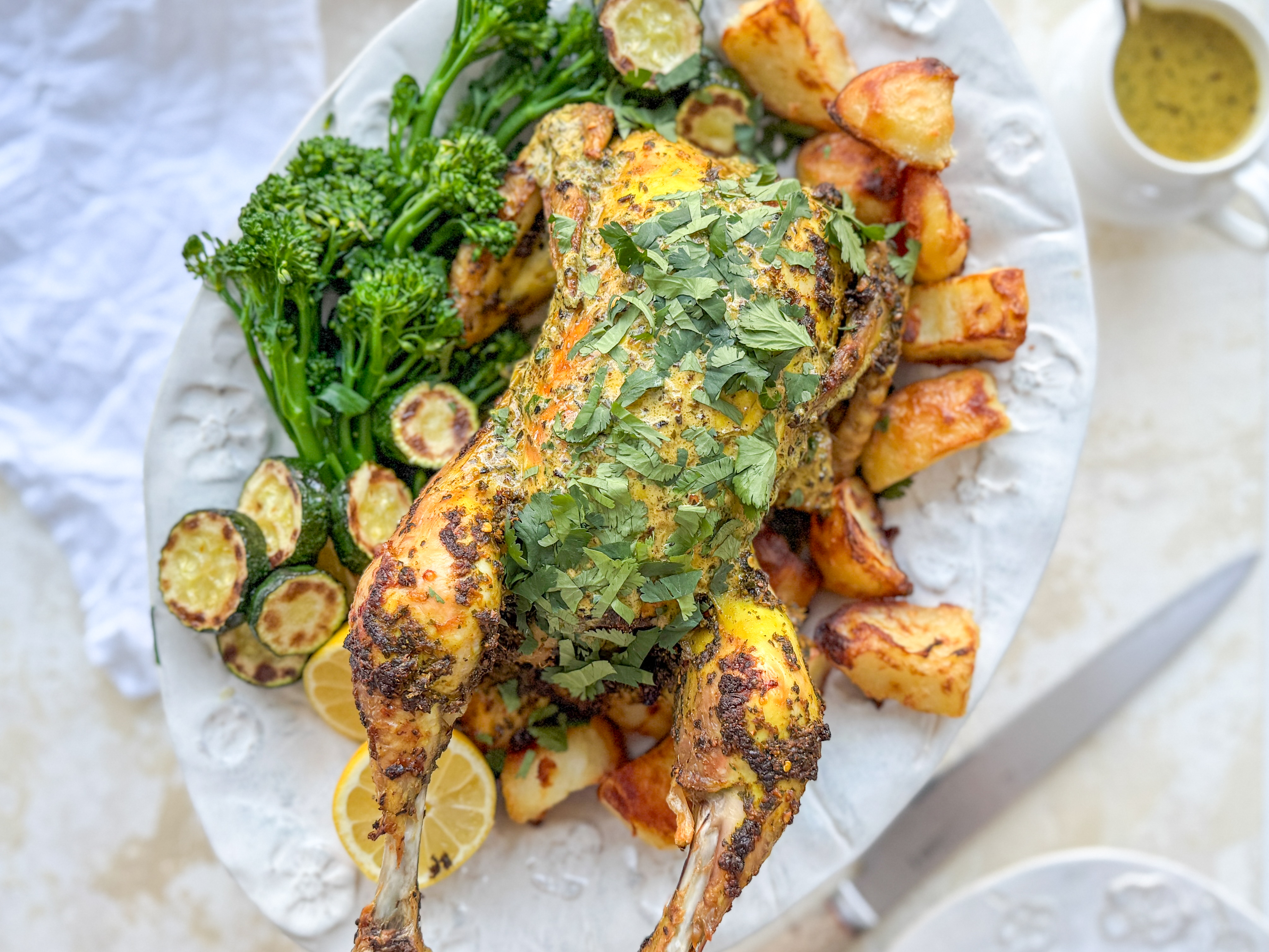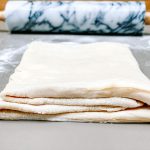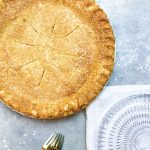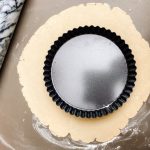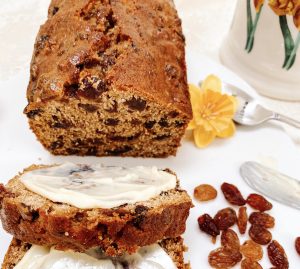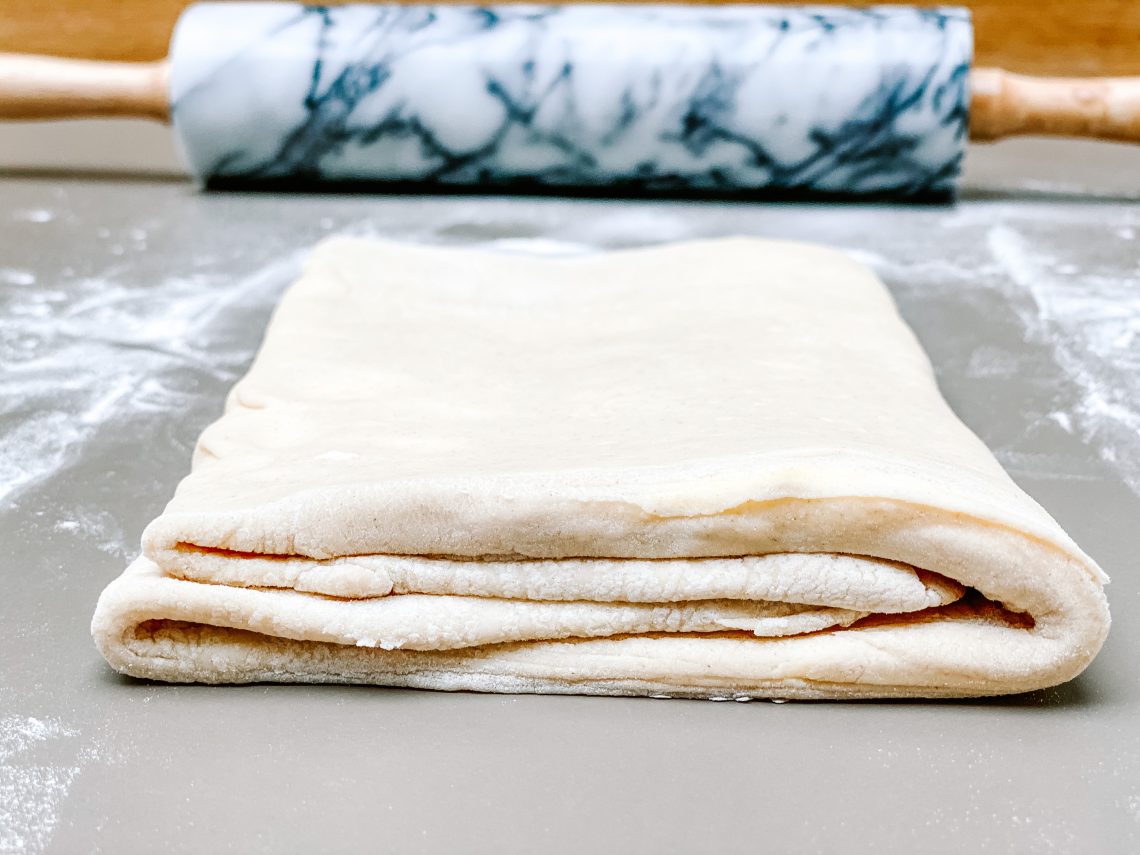
Puff Pastry
Crispy, light and flaky, puff pastry is a laminated dough made from flour with a high ratio of butter inserted inside the dough and then rolled and folded numerous times. It is fiddly and time consuming but it is not difficult and, goodness me, the difference it makes compared to store bought pastry, is huge.
How to make Puff Pastry
You need to start making this pastry a minimum of 5 – 5½ hours before you want to use it. This includes around 4 hours refrigeration time. However, it will also be just fine to make it a day or two before you want to use it and keep it covered and in the fridge until ready.
Collect all your ingredients together:
- plain/all-purpose flour
- fine salt
- very cold water
- cold unsalted butter, in a block
Start by making the dough with flour, water and salt:
- Weigh the flour into the bowl from a free-standing mixer and stir in the salt.
- Pour in the water and roughly mix together with a spoon or knife.
- Using the dough attachment from your mixer, knead on a medium speed for 5 minutes or until the dough is very smooth and has completely come together. Alternatively you could knead this by hand.
- Form into a smooth ball with your hands, cover in cling film and put in the fridge for 30 minutes.
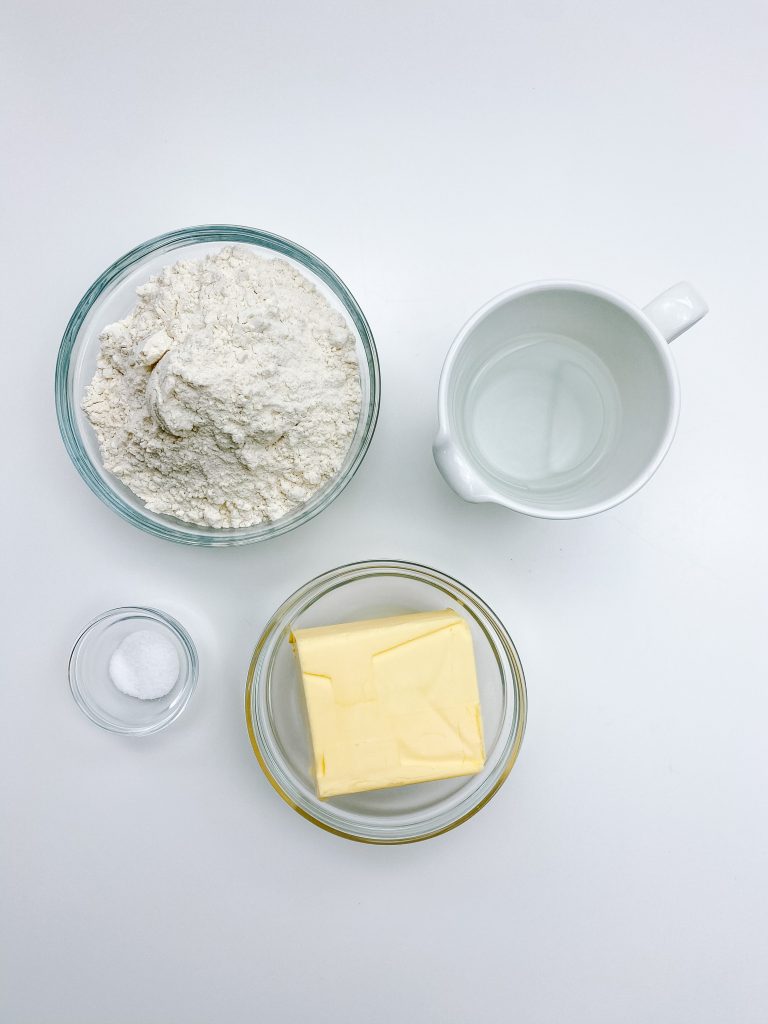
Puff pastry ingredients 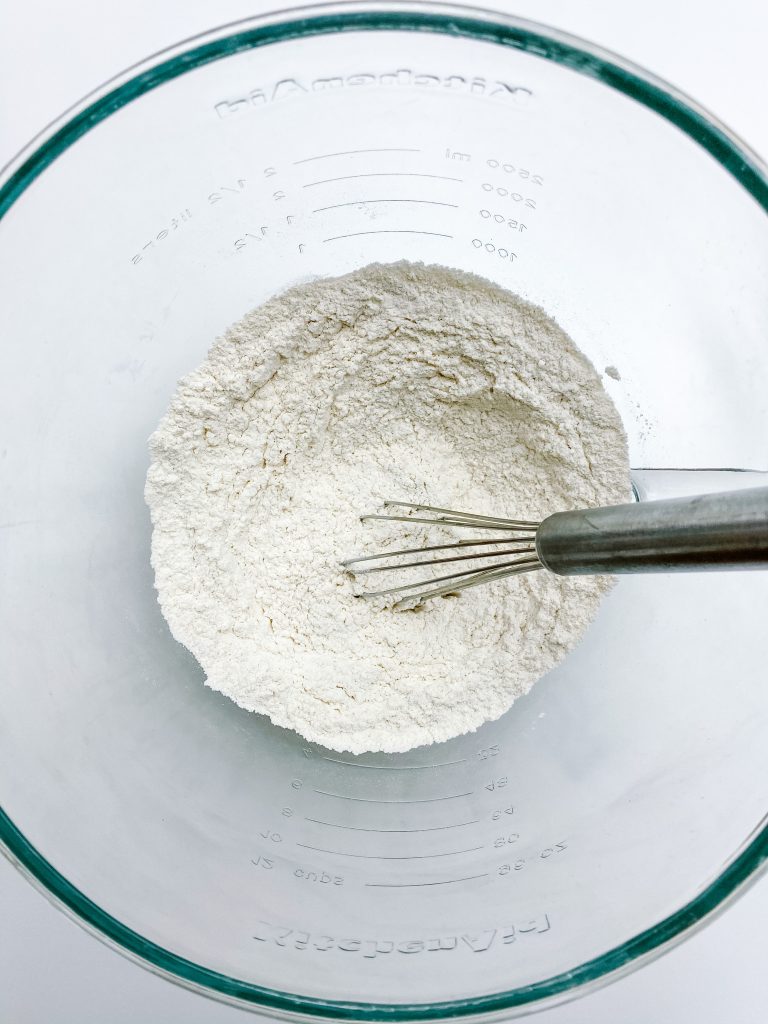
1 Stir flour and salt 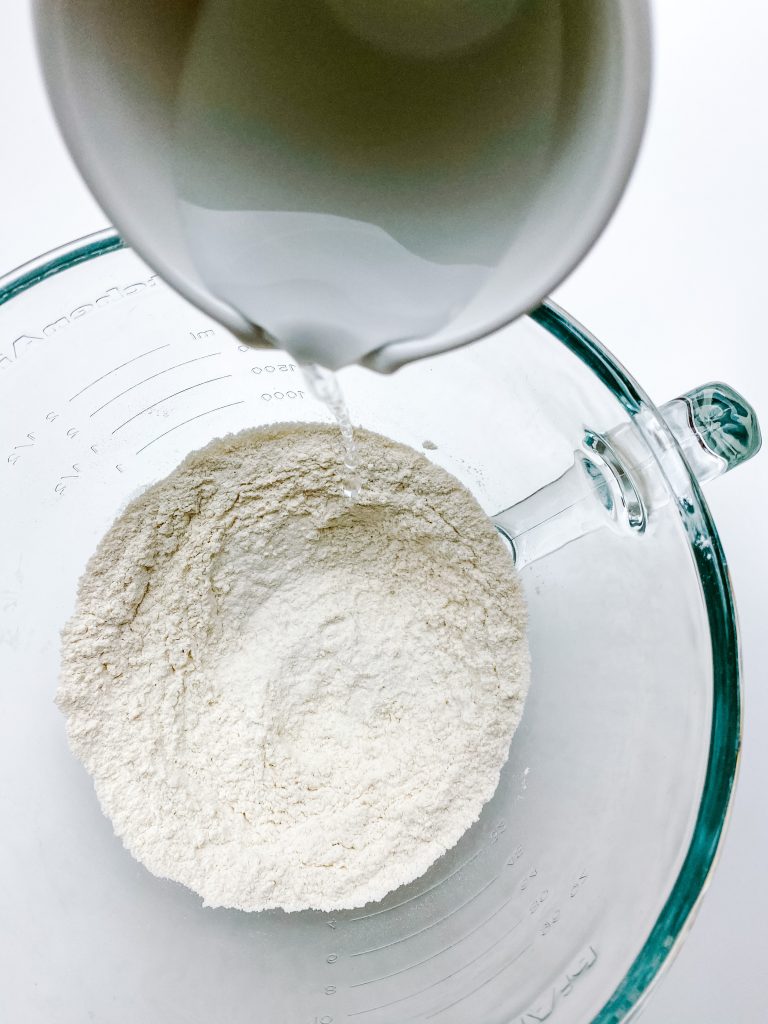
2 Add cold water and … 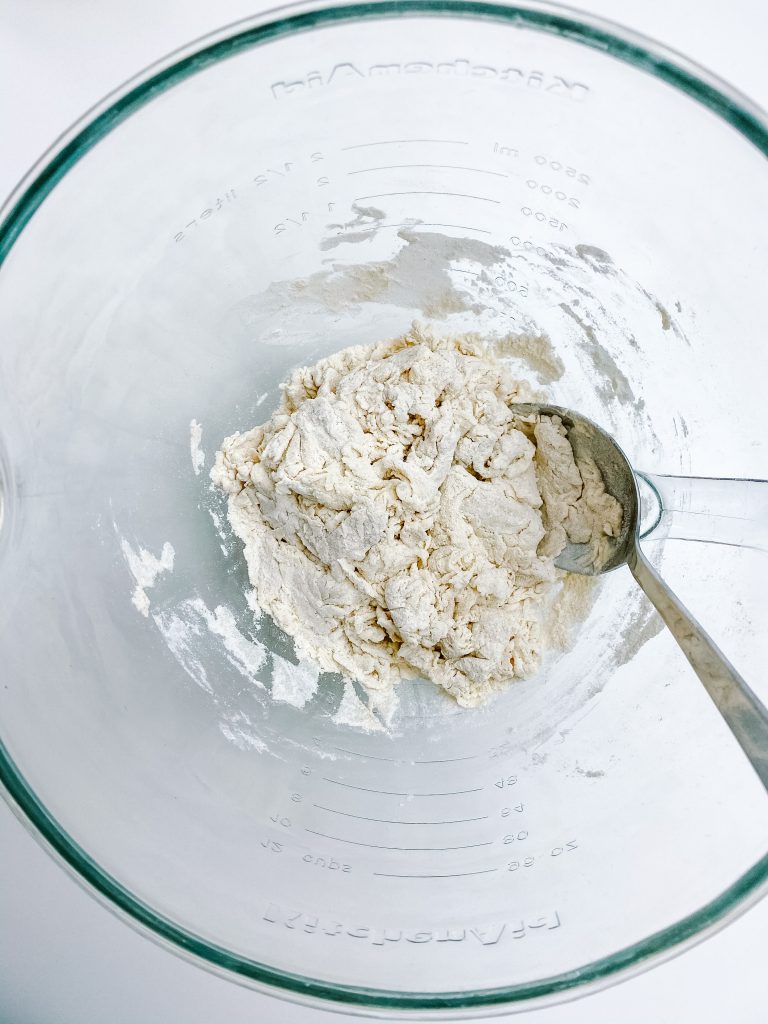
… mix 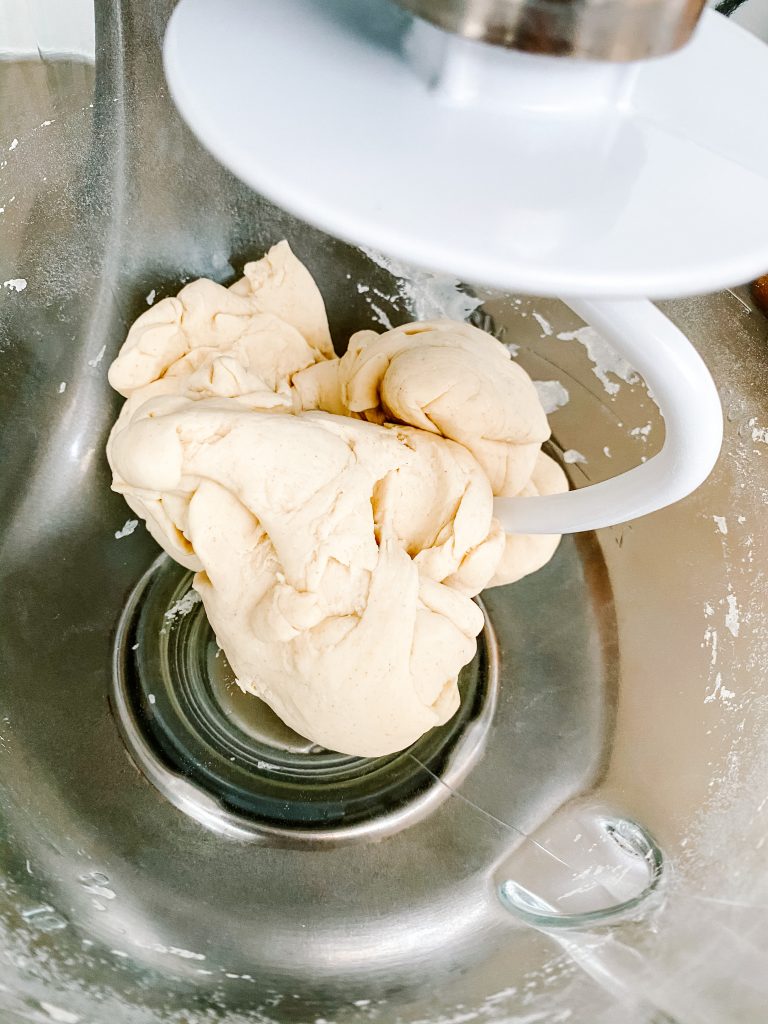
3 Knead for 5 mins 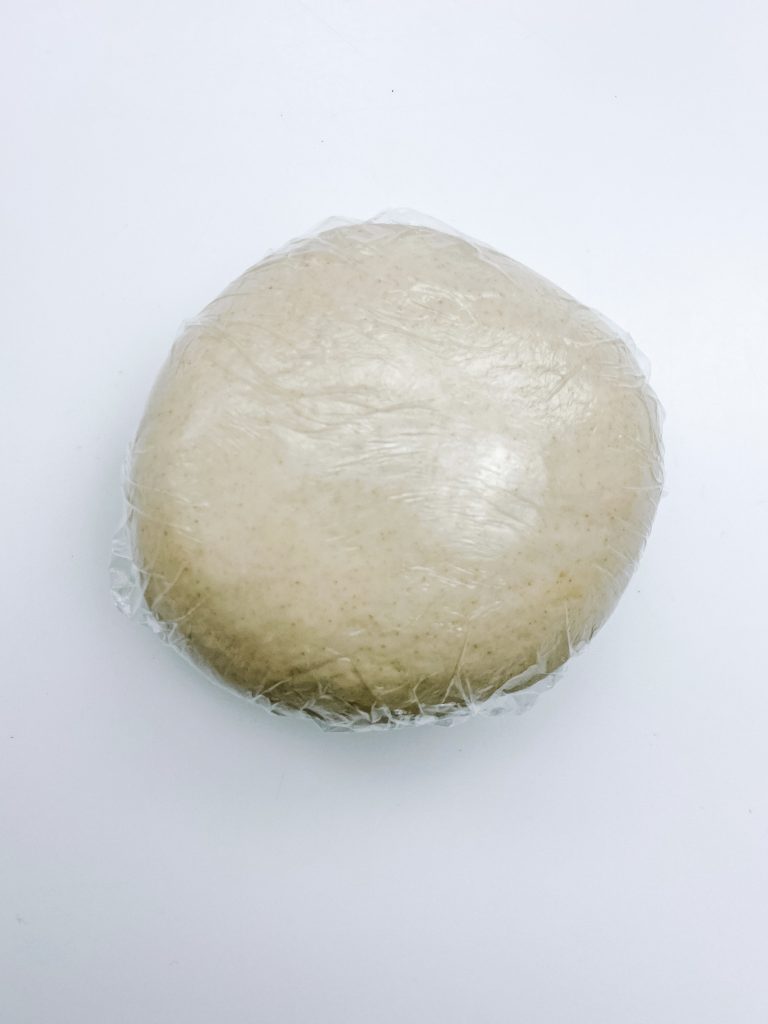
4 Cover. Refrigerate 30 mins
Next prepare the butter:
- Whilst the dough is in the fridge, prepare the butter. Lay a large piece of baking parchment on your work surface and place the butter in the centre. Cover with a second large piece of baking parchment.
- Bash the butter with a rolling pin to make a flat rectangle measuring 25cms x 17cms. Lift the paper off the top from time to time and use a palette knife to ensure your butter keeps a rectangle shape. If some areas are thicker than others and you have bits of butter sticking out, you can cut these off and stick onto the thin parts! Cover with the paper and roll and smooth with a rolling pin, until you get the correct size and shape.
- Leave on the baking parchment and pop onto a hard surface, such as a chopping board, and put back in the fridge, covered with baking parchment, to harden for at least 20 minutes.
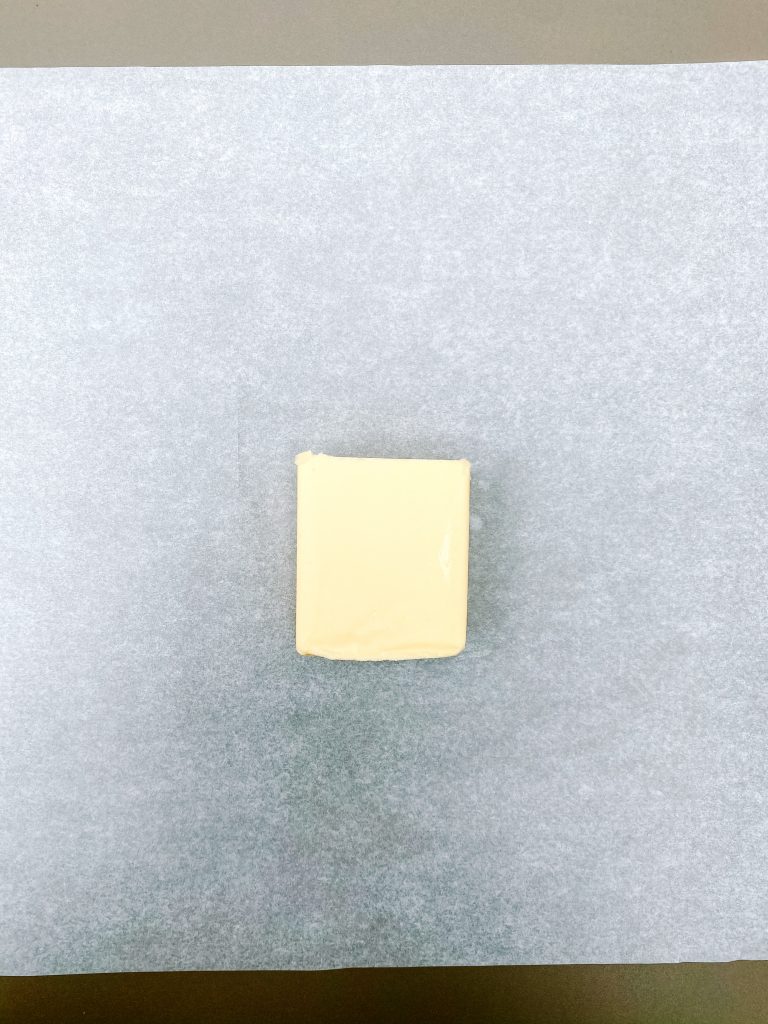
1 Lay butter on parchment paper… 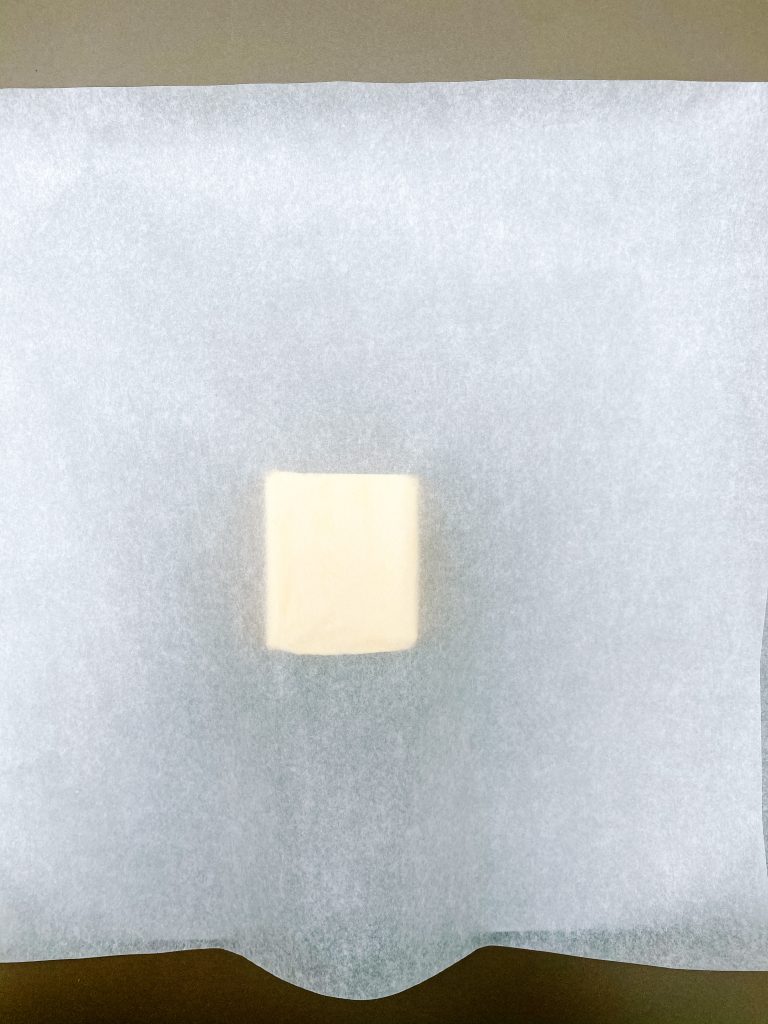
… cover with second piece of parchment 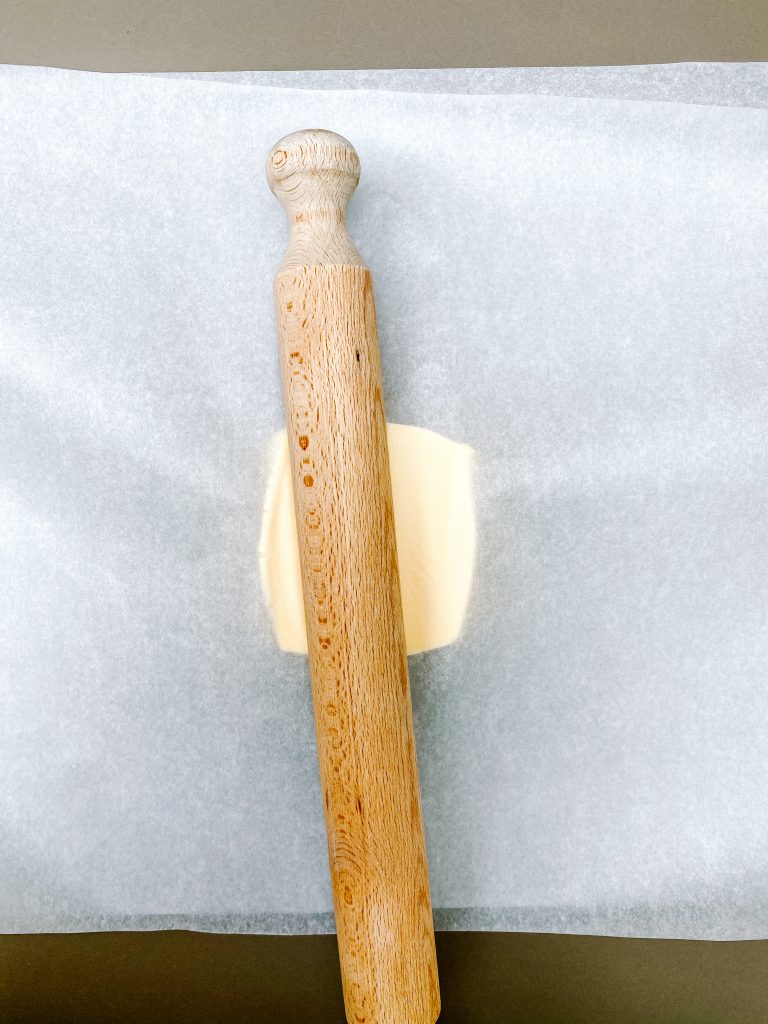
2 Bash butter .. 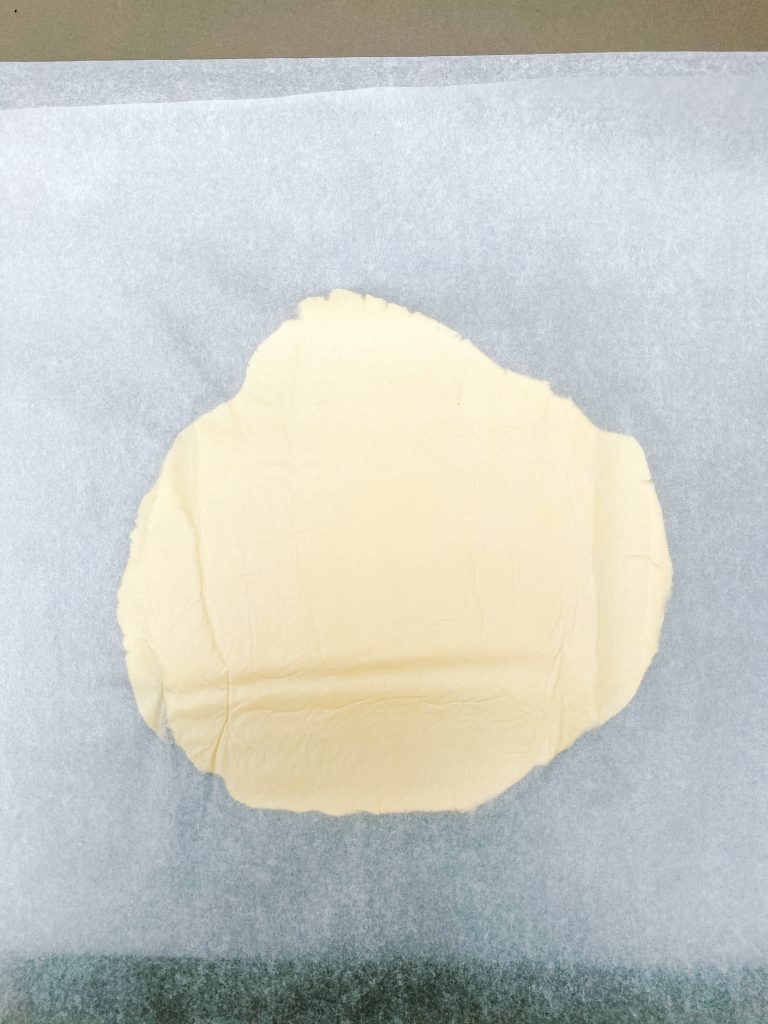
… to make a … 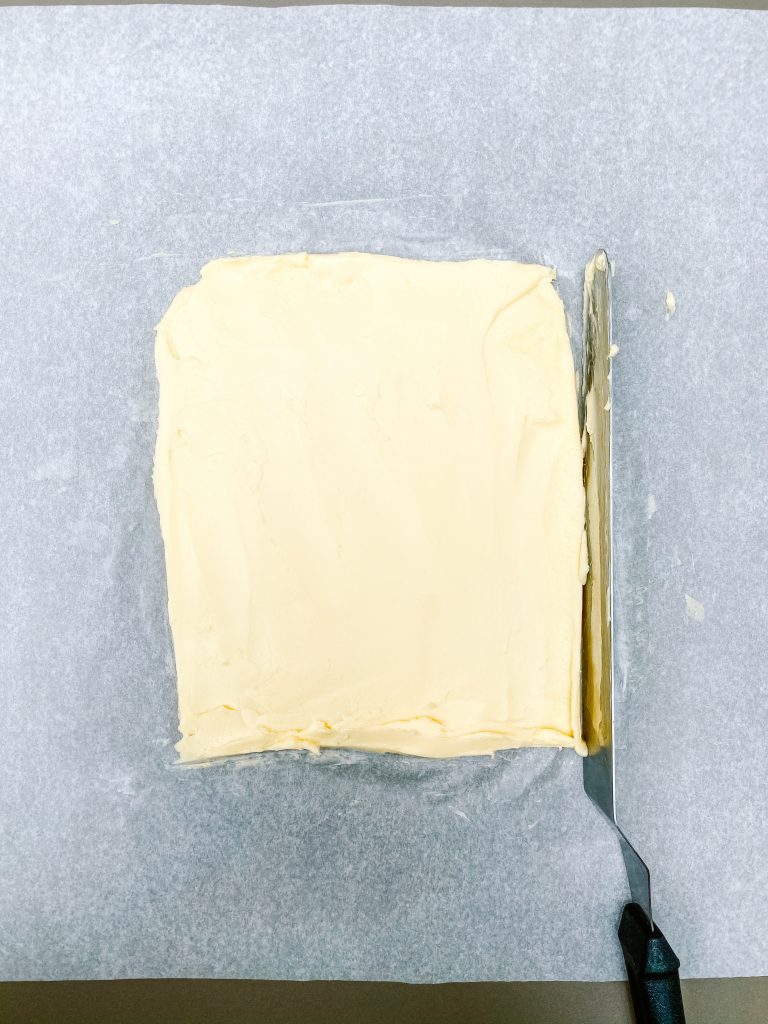
… rectangle. Use palette knife to ensure butter 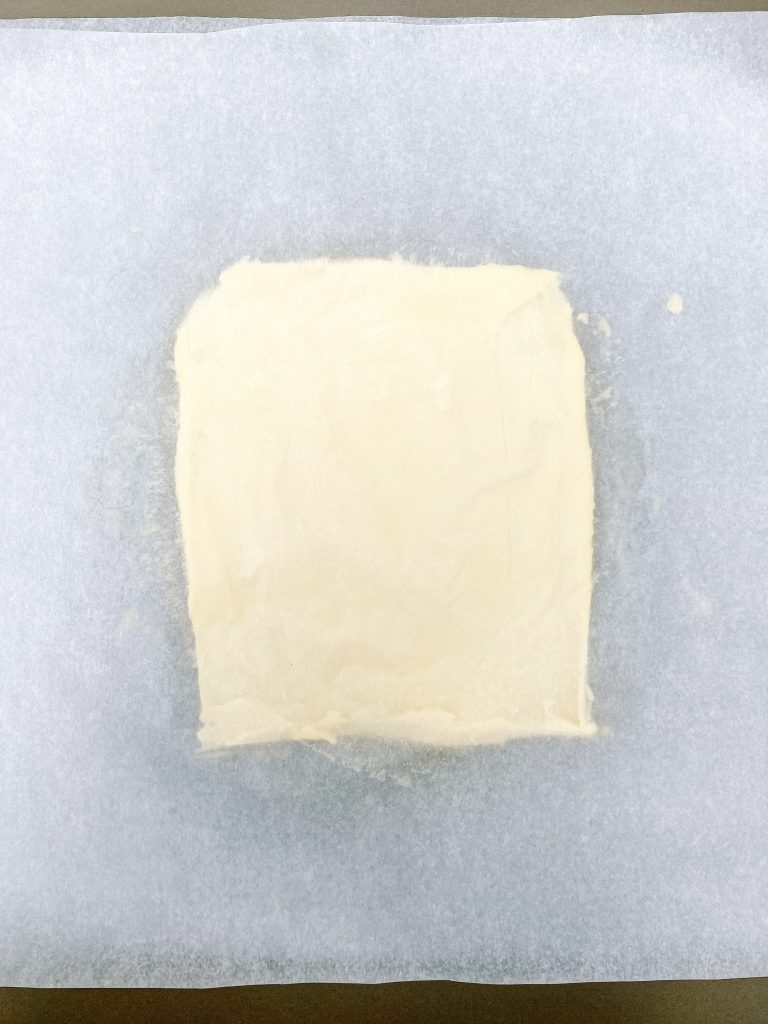
keeps a rectangle shape. 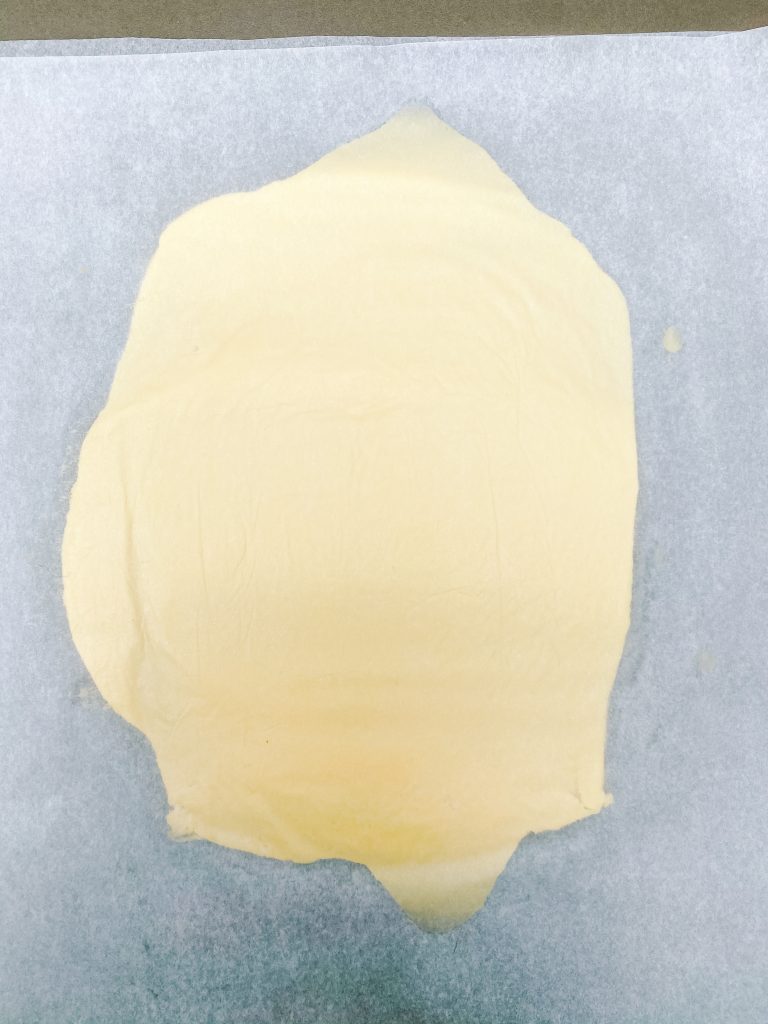
If some areas are thicker and you have bits of butter sticking out … 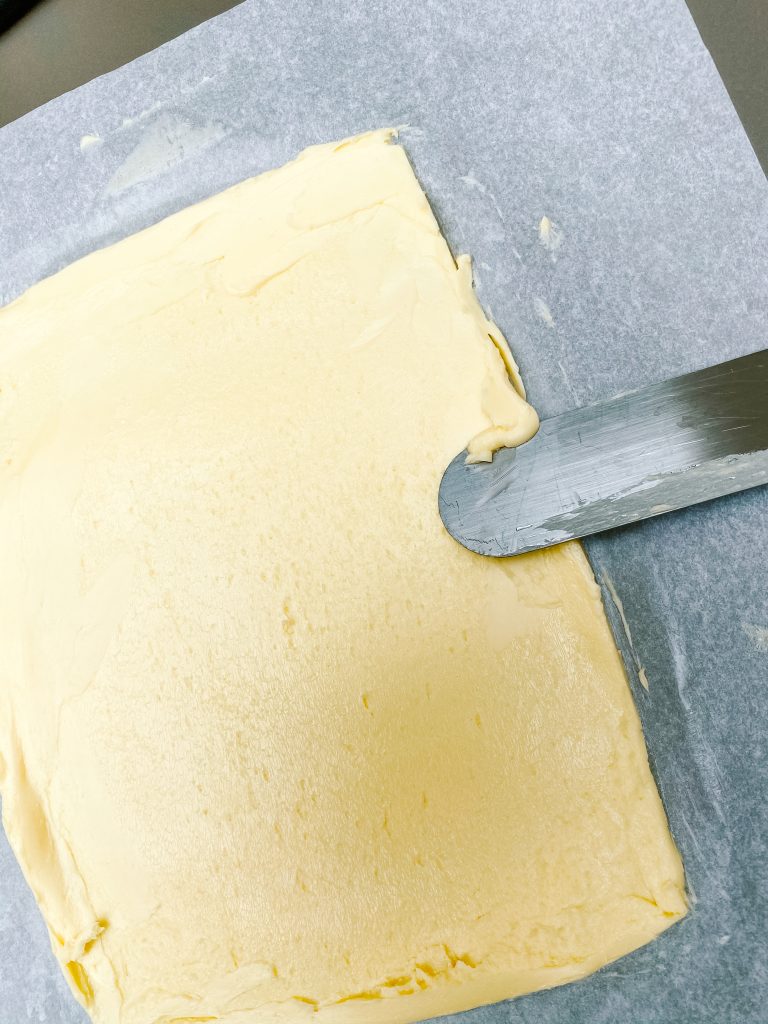
… cut these off and stick onto thin parts! 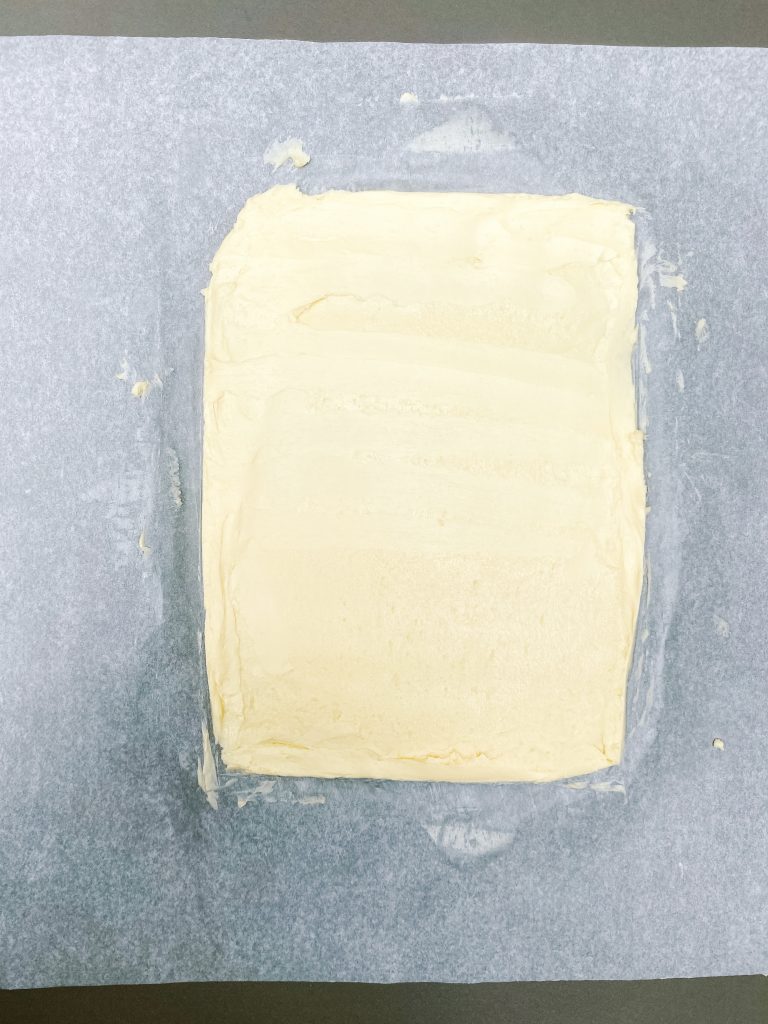
Cover with paper and roll and smooth … 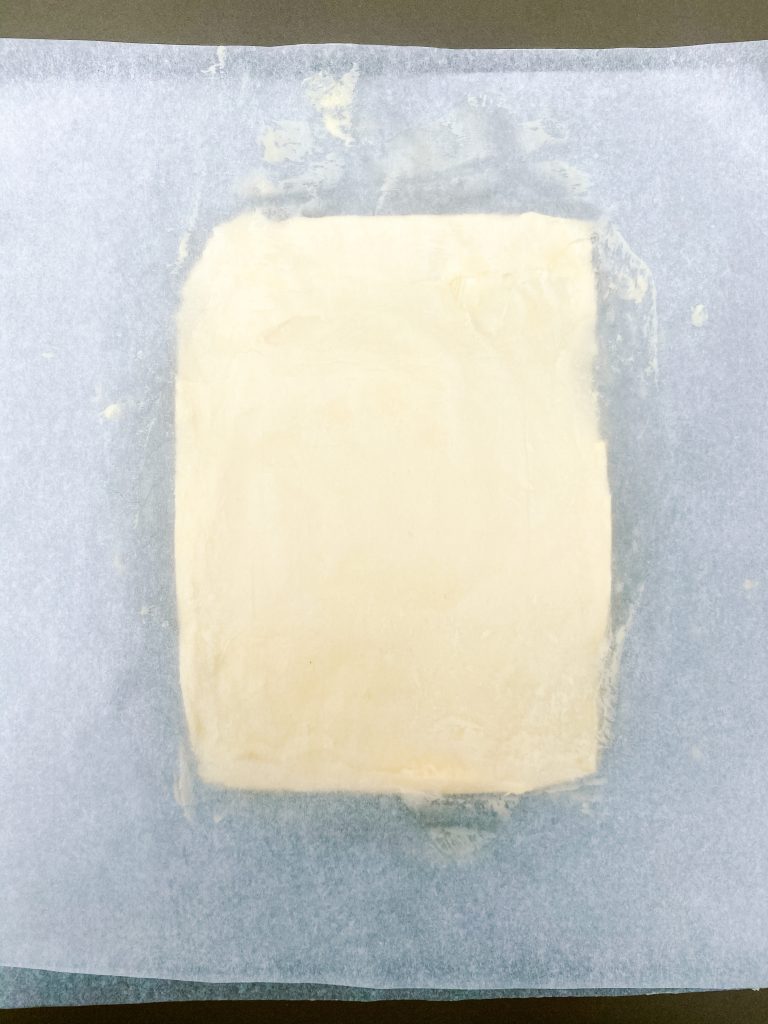
until you get correct size. 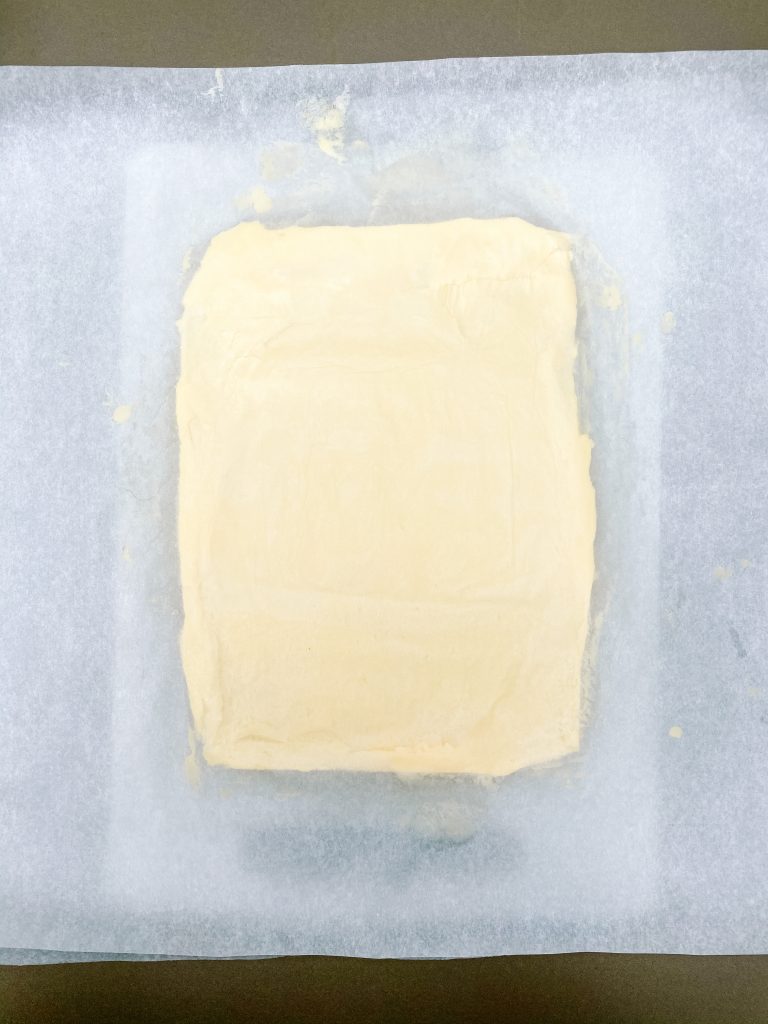
3 Refrigerate for 20 mins
Bring the dough and butter together and first fold:
- First Fold – when the dough has been in the fridge for 30 minutes, remove and lay in the centre of lightly flowered surface and roll into a long rectangle 40cms x 20cms stopping to ensure the edges are as straight as possible. Use a palette knife to help maintain the shape. Brush any excess flour off the surface of the dough.
- Remove the butter from the fridge and take the parchment off the top layer. Whilst the butter is still attached to the under layer of parchment, use this to help you move the butter. Place it on the bottom of the rolled-out pastry, quite close to the edges and carefully peel off the parchment.
- Fold the top ⅓ of the dough over the butter and brush any excess flour off the surface of the dough. Then fold the bottom third of the dough and butter up over the top third. Now brush any excess flour off the surface of this dough and also on the underside. Your dough will now be in layers – dough, butter, dough, butter, dough.
- Seal the edges with the rolling pin, cover in cling film and put back in the fridge for 30 minutes
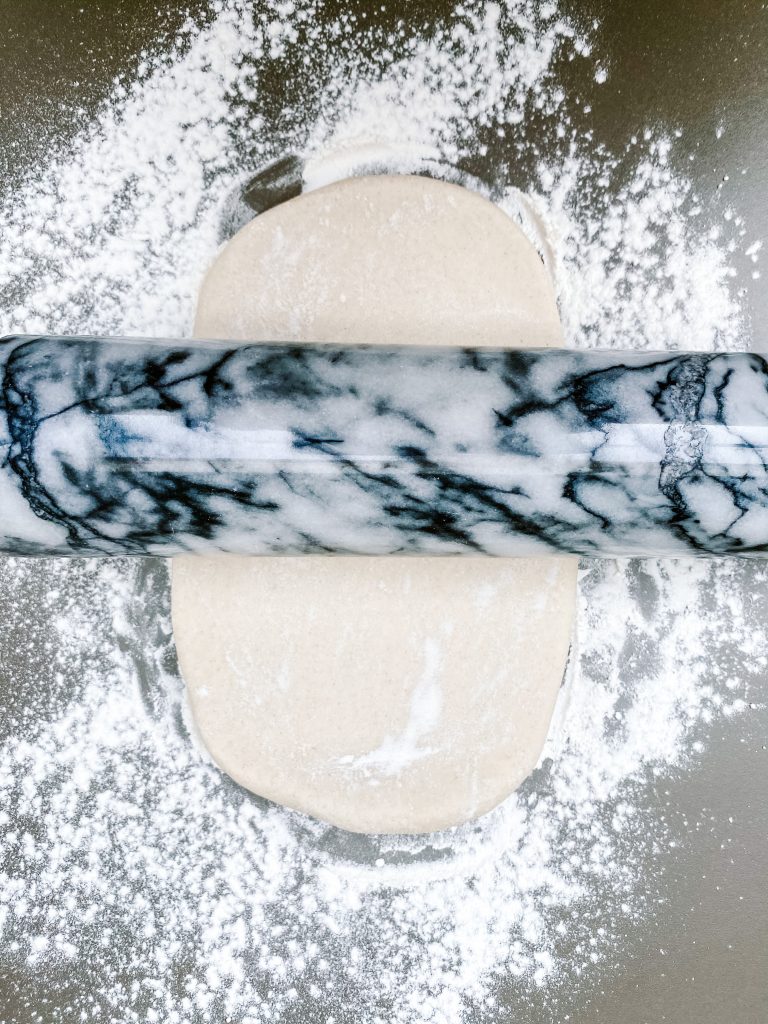
1 Roll dough on floured surface 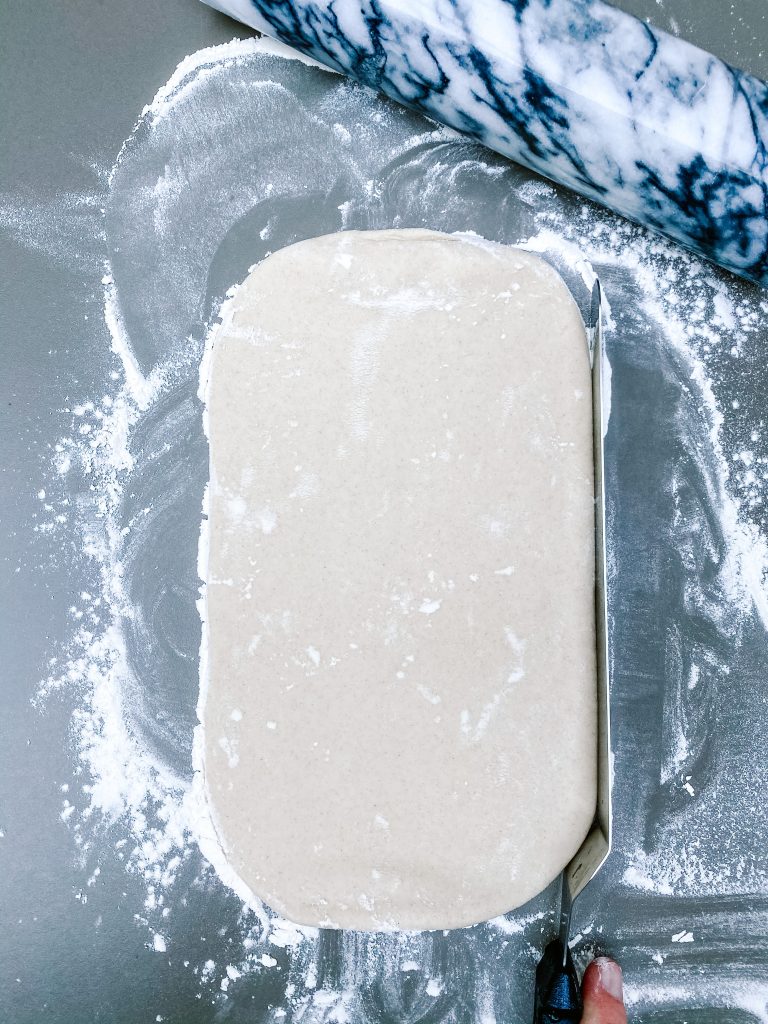
Shape with palette knife 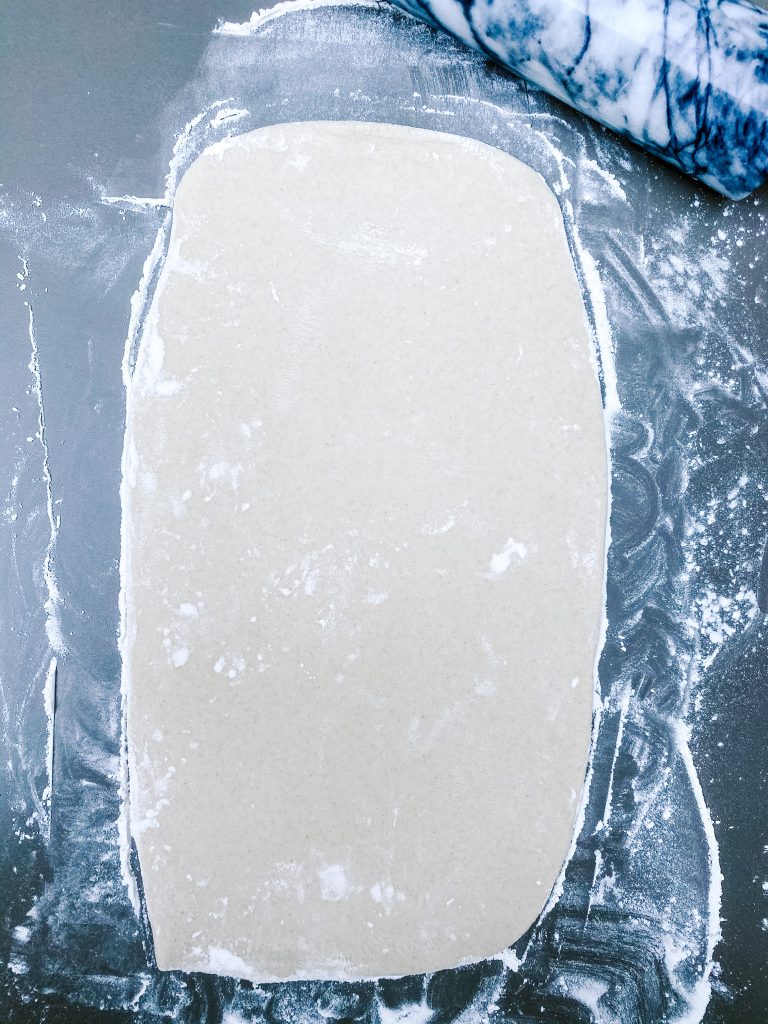
until 40cms x 20cms. Brush off excess flour. 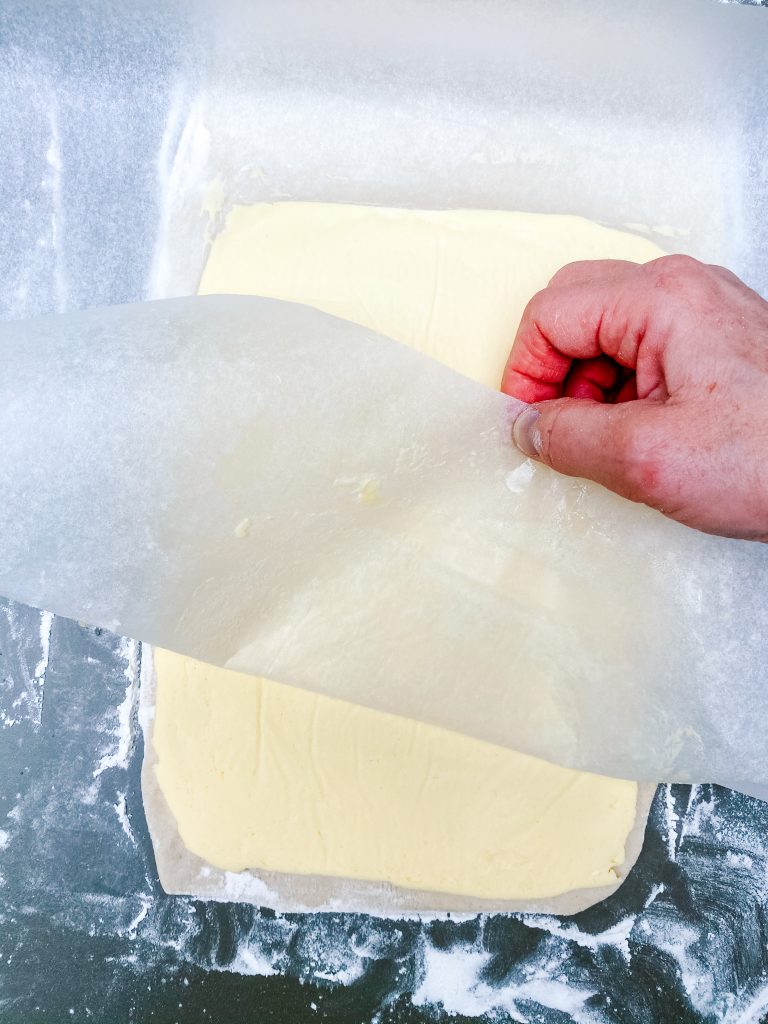
2 Place butter on dough … 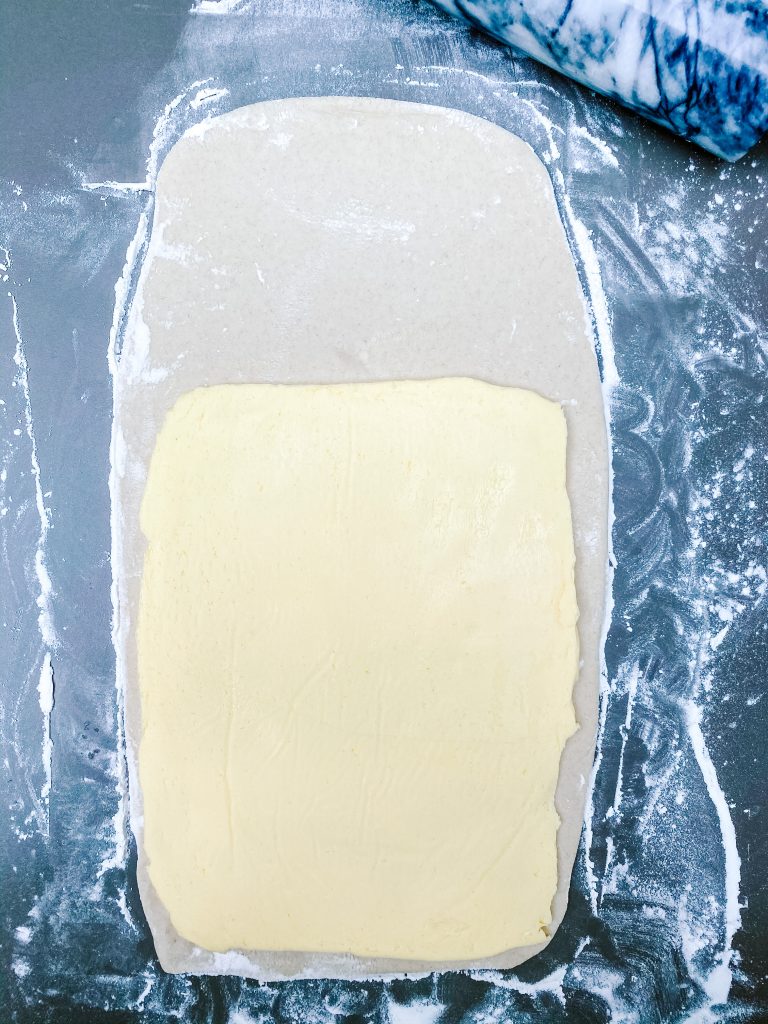
… and remove parchment 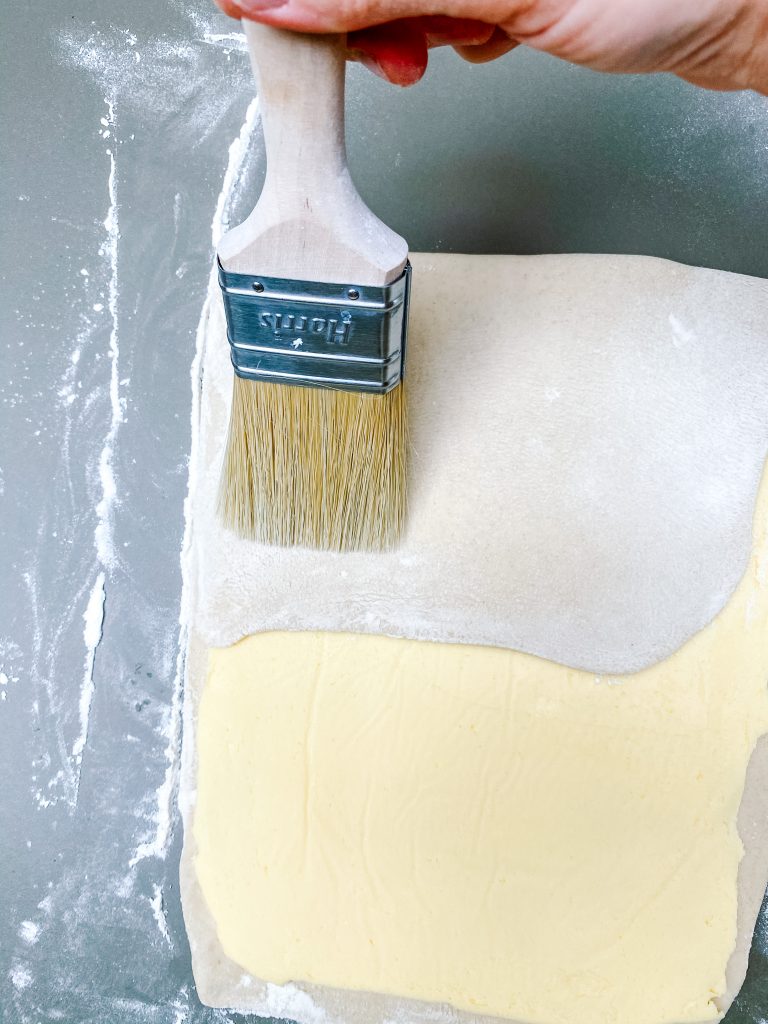
3 Fold down top ⅓ and brush off excess flour 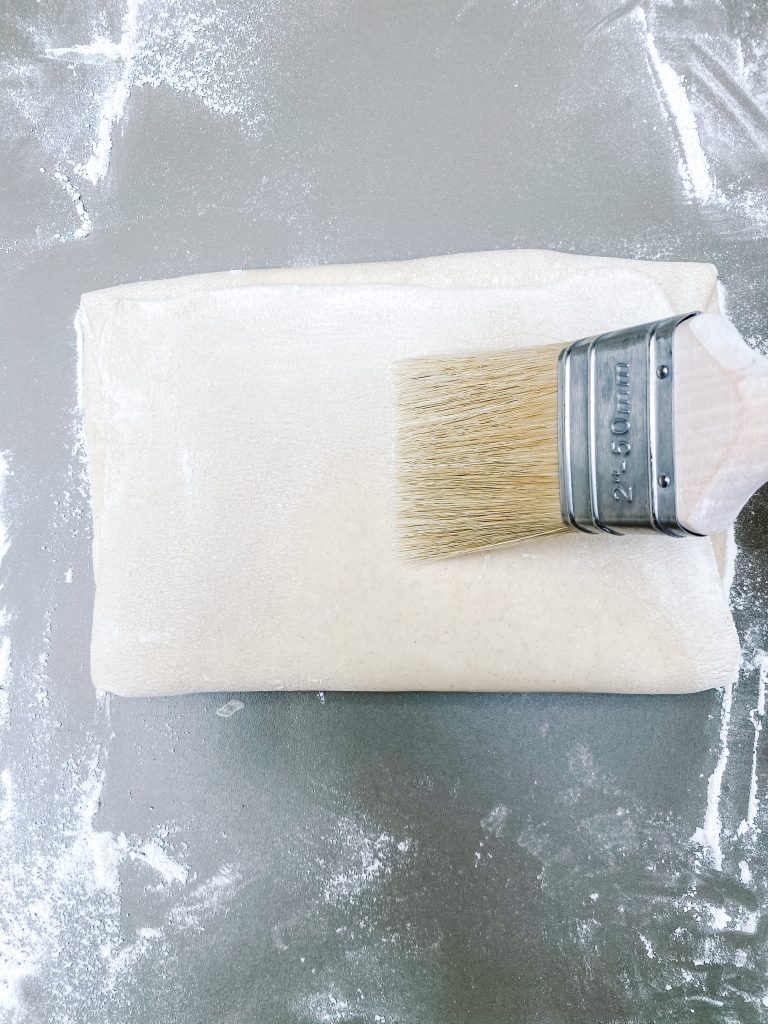
Fold up bottom third. Brush off excess flour. 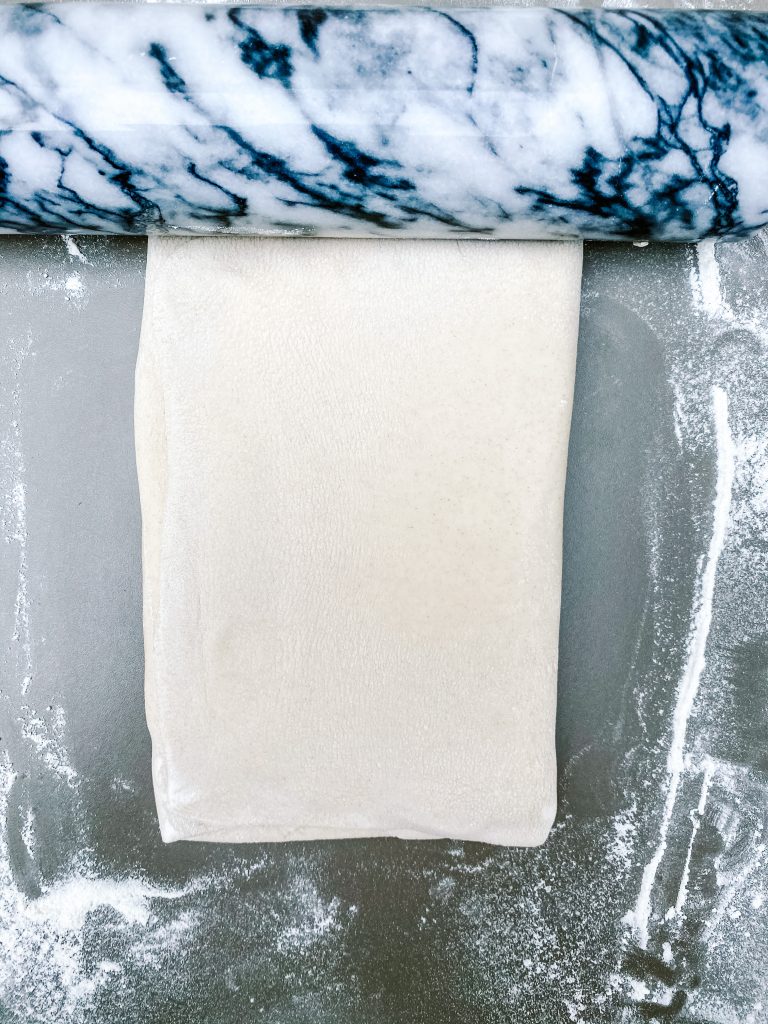
4 Seal edges, cover … 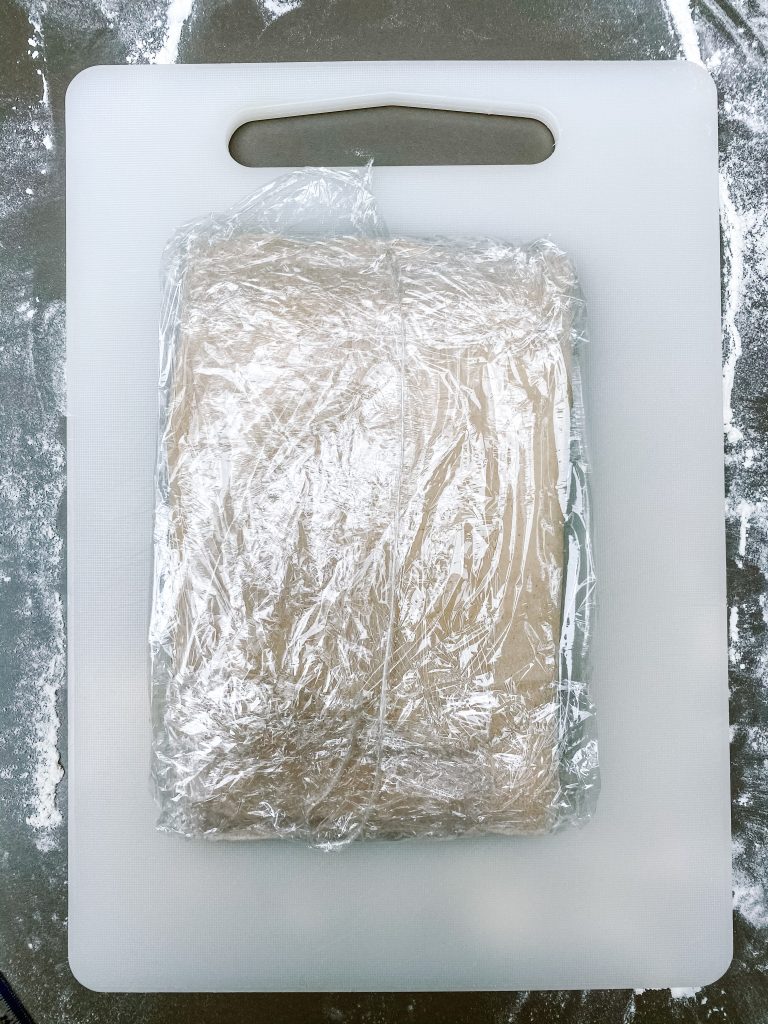
… refrigerate 30 mins
Second Fold:
- Second fold – after 30 minutes, remove the dough from the fridge, and with the short side facing you, roll the pastry into a long rectangle 50cms x 20cms. Start rolling by pressing the rolling pin into the dough and butter at close intervals and then roll. Brush any excess flour off the surface of the dough.
- Now, fold the bottom quarter of the pastry to the centre of the rectangle and then fold the top quarter of the pastry up to meet it. Brush any excess flour off the surface of the dough.
- Fold the pastry in half along the centre line – this is called a book turn. Once again, brush any excess flour off the surface of the top and underside of the dough. Cover with cling film and put back in the fridge for 30 minutes.
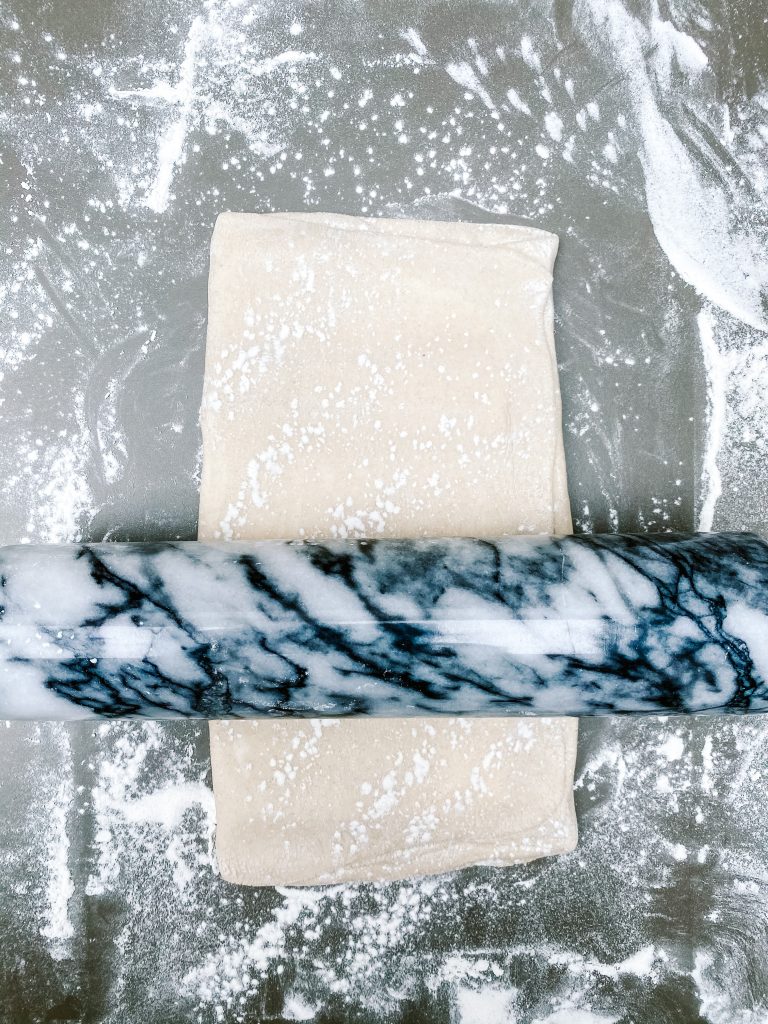
1 Press rolling pin into dough at close intervals and then roll. 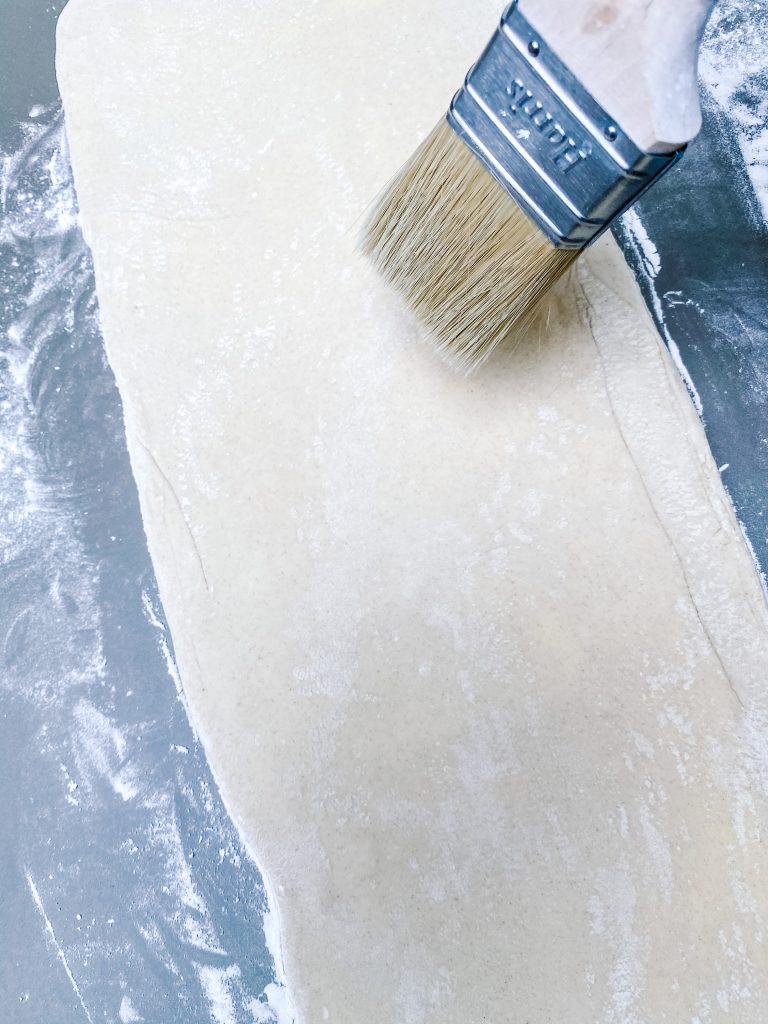
Brush off excess flour 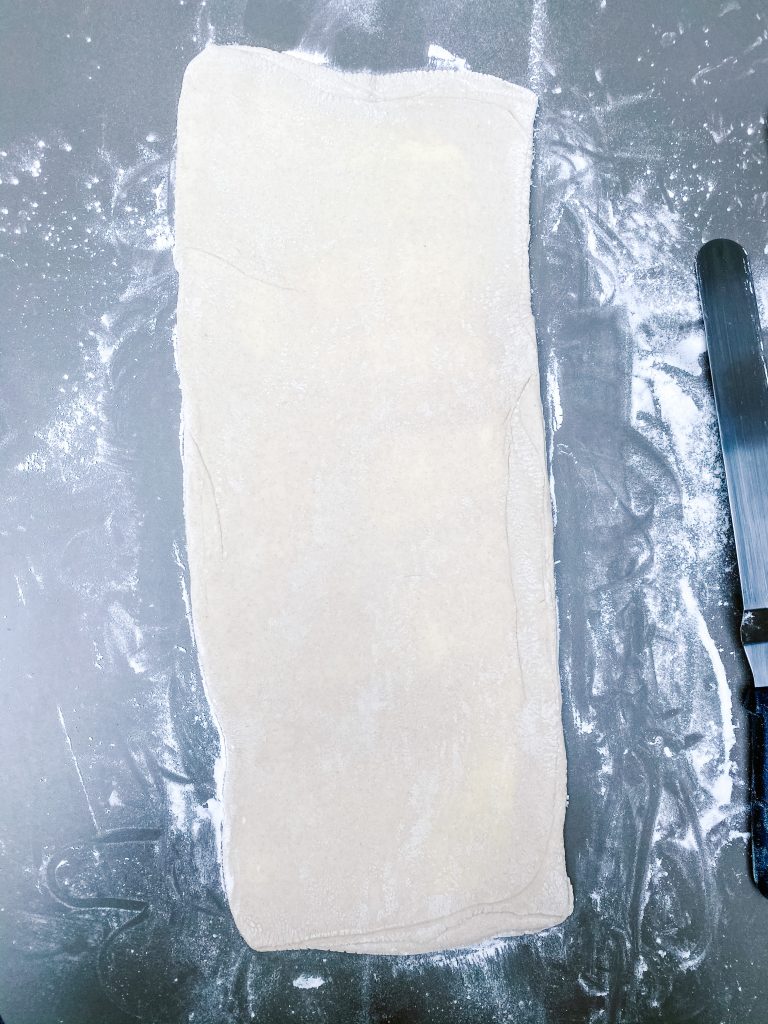
50cms x 20cms. 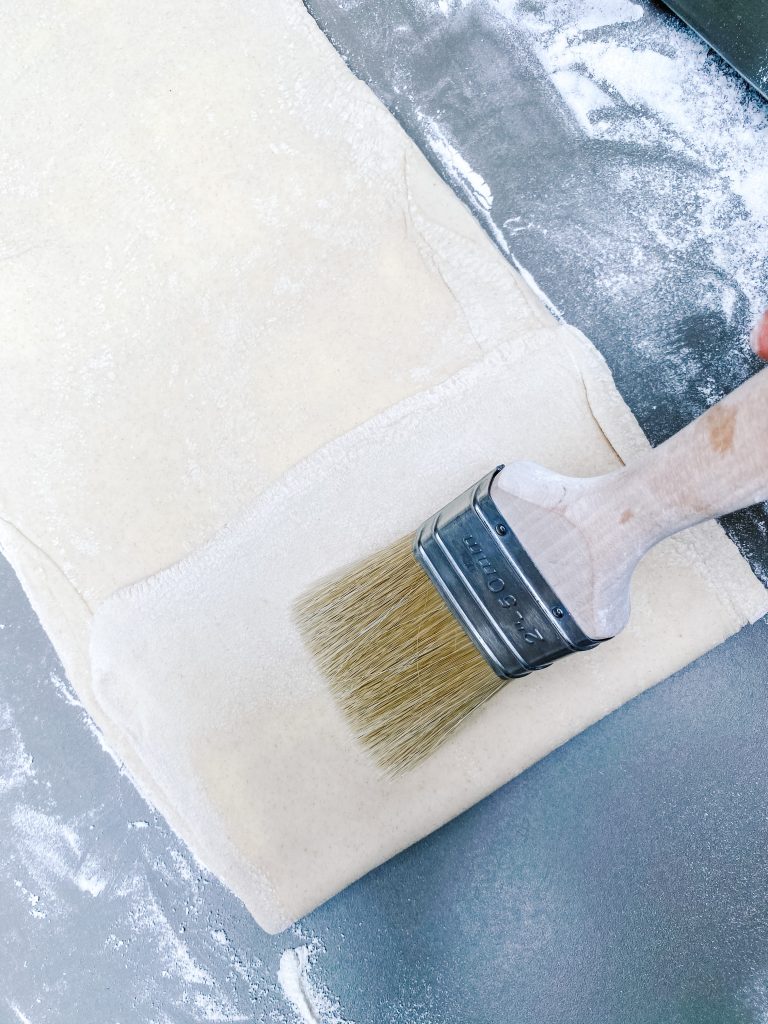
2 Fold bottom quarter of pastry to centre of rectangle, then … 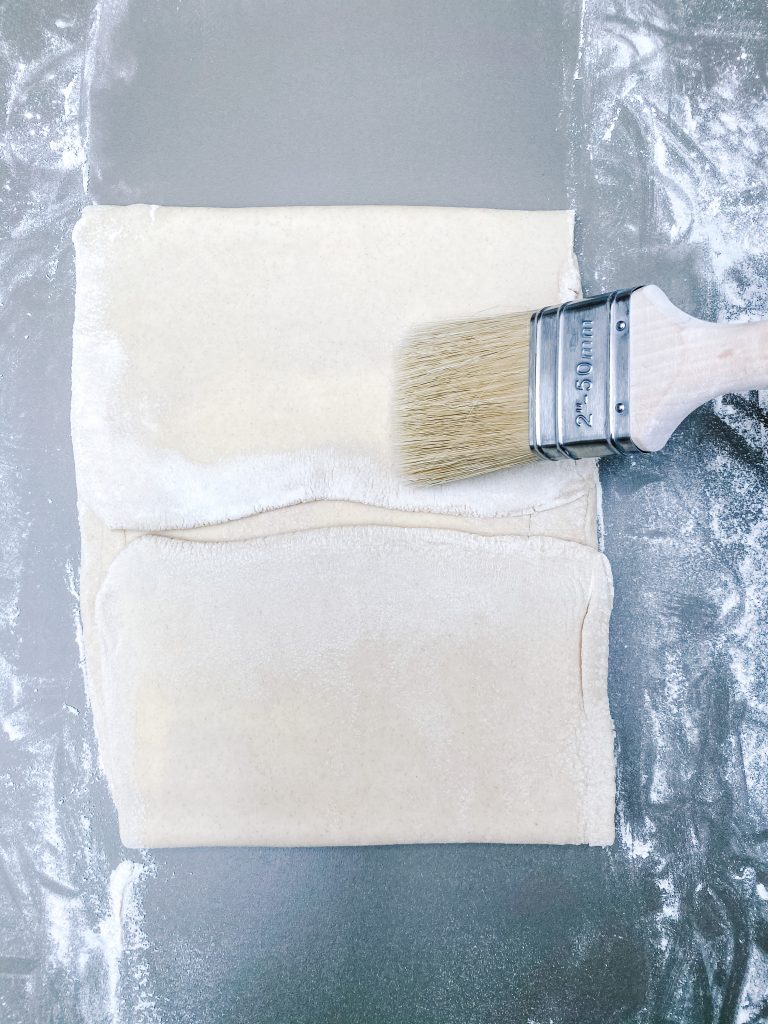
fold top quarter to meet it. Brush off excess flour 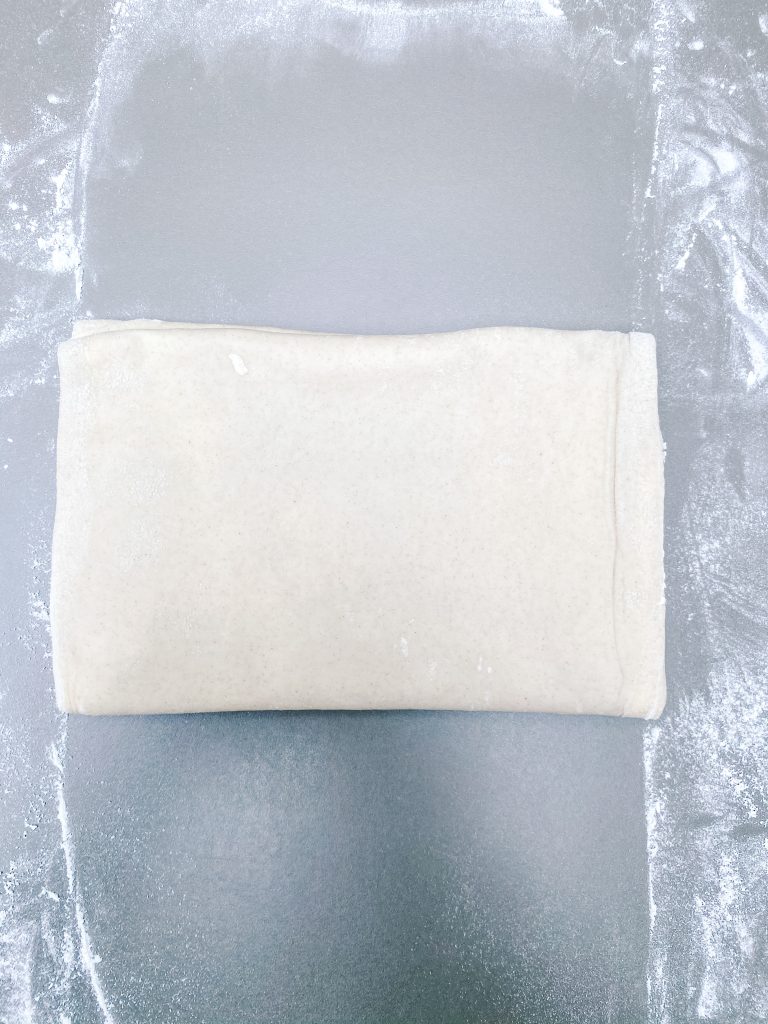
Fold in half along the centre line 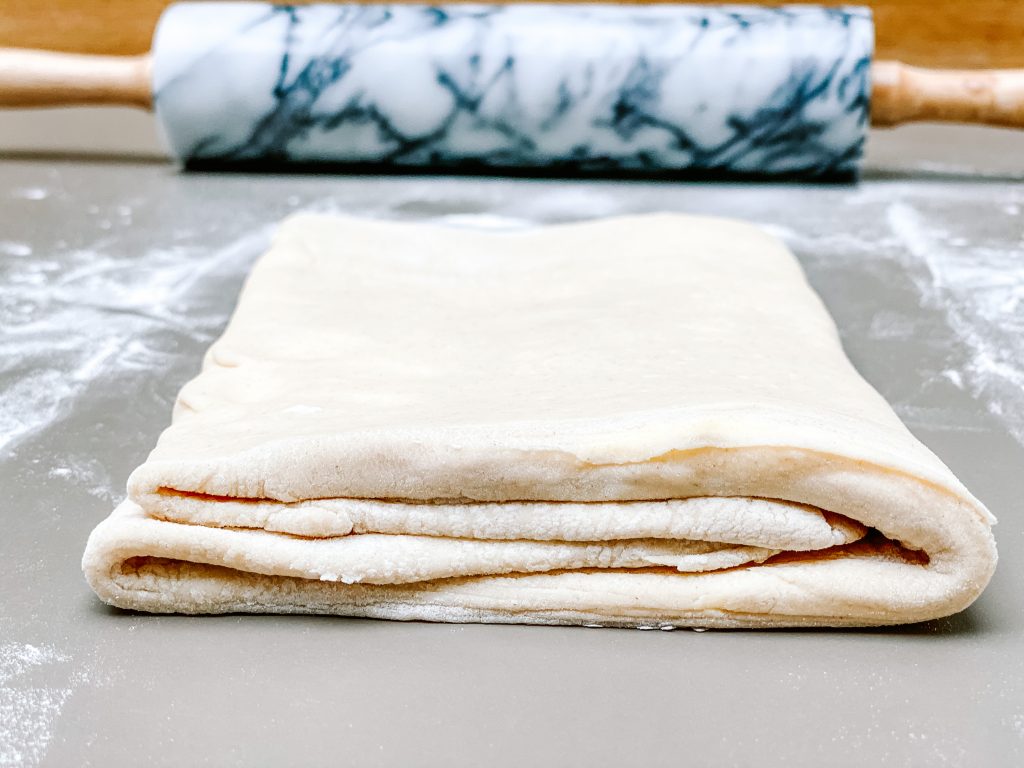
Brush excess flour off top and underneath. Refrigerate for 30 mins.
Third Fold:
- Third fold: after 30 minutes, remove from the fridge and, with the short side facing you again, roll into a rectangle 45cms x 20cms. Brush any excess flour off the surface of the dough.
- This time fold the top ⅓ down, brush any excess flour off the surface of the dough and then fold the bottom ⅓ over this fold. Once again, brush any excess flour off the surface of the top and underside of the dough. This is called a single turn. Cover with cling film and put back in the fridge for 30 minutes.
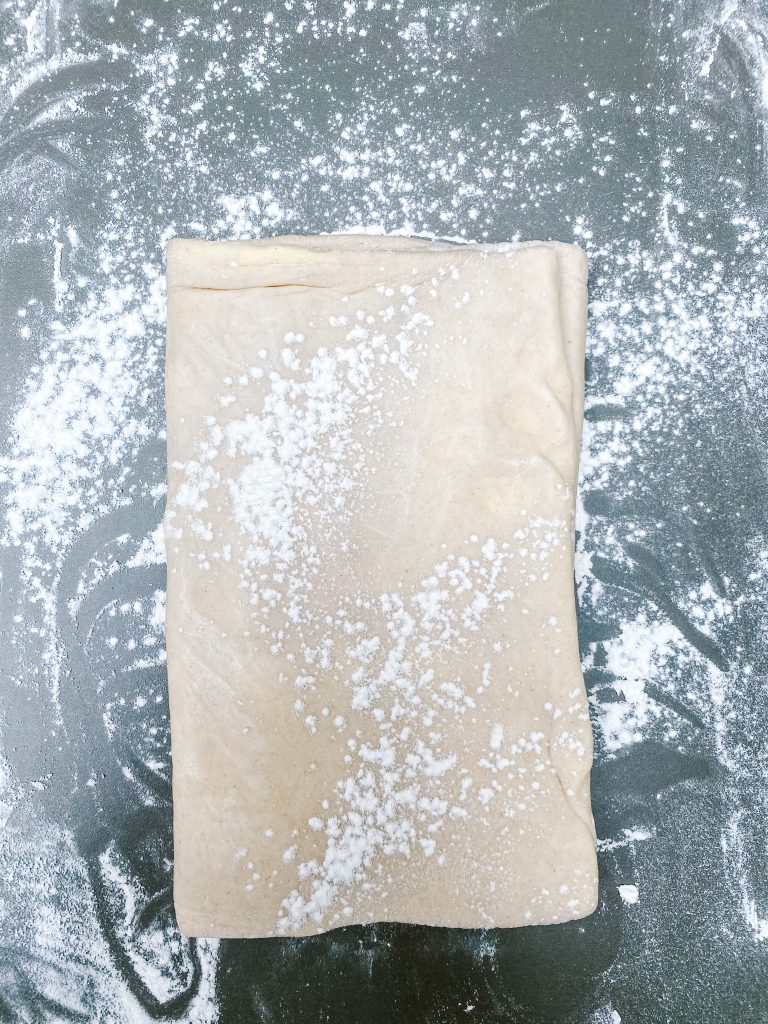
1 Short side facing you … 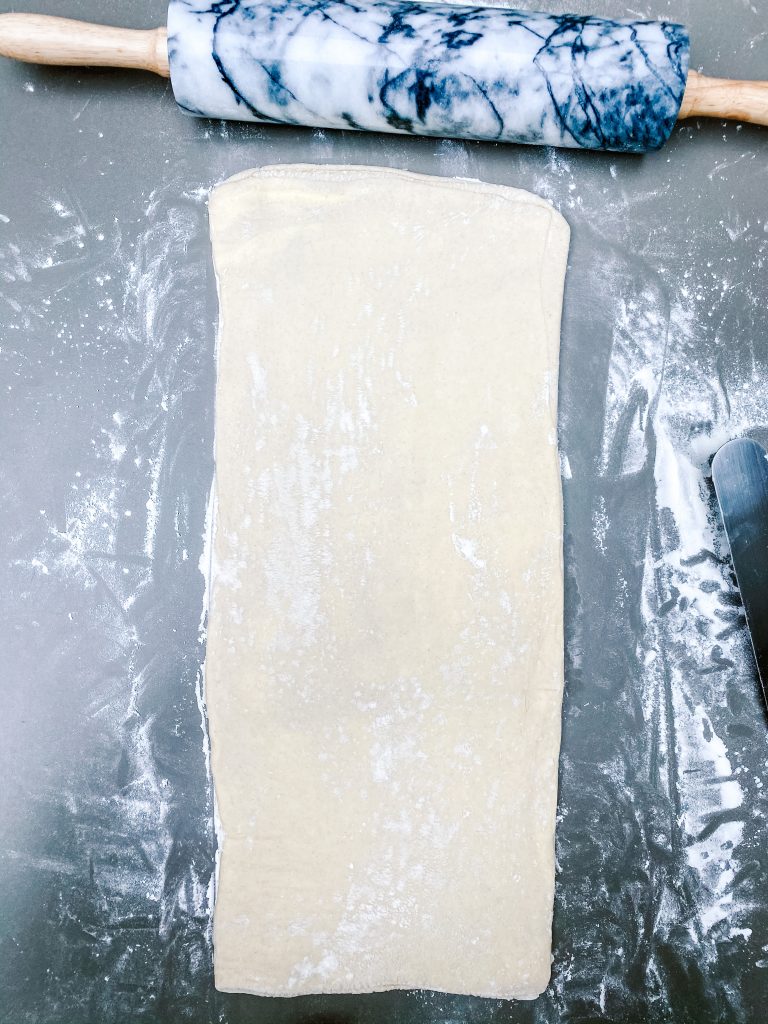
… roll to 45cms x 20cms. 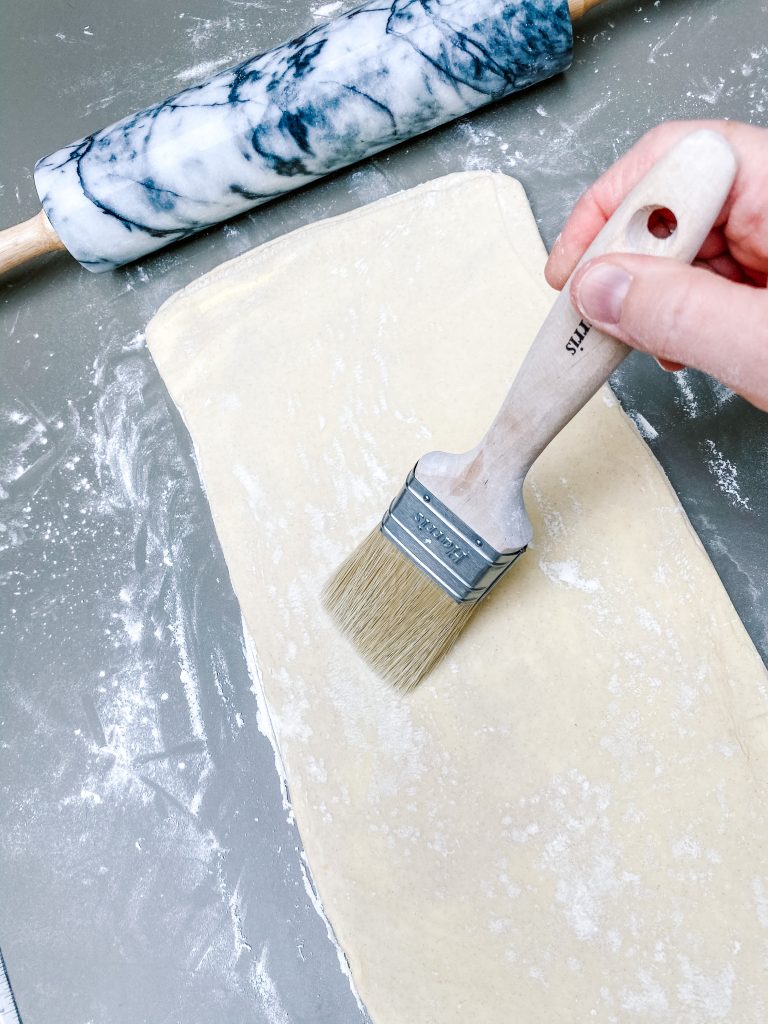
Brush off excess flour 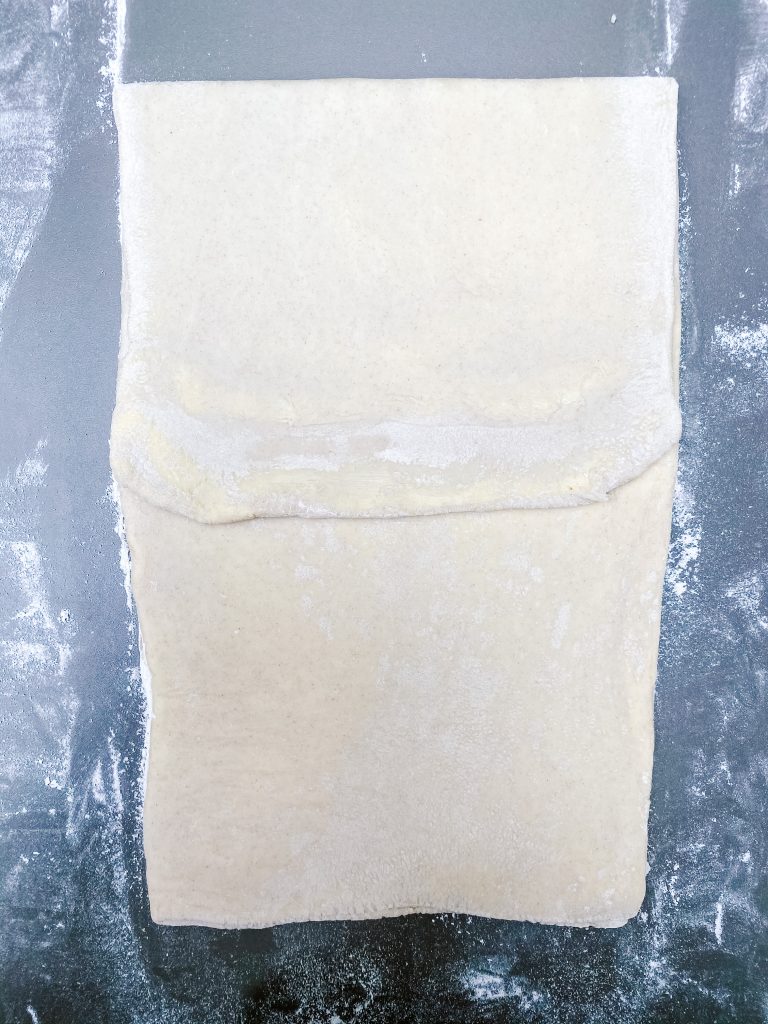
2 Fold top ⅓ down, brush 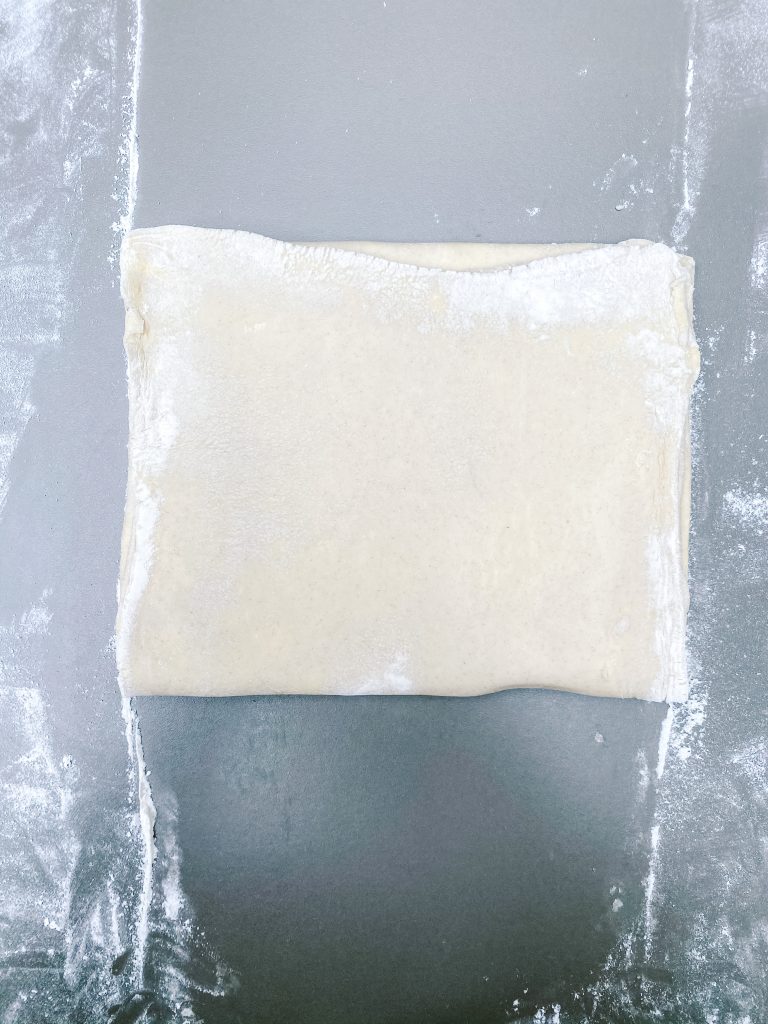
then fold the bottom ⅓ over this fold 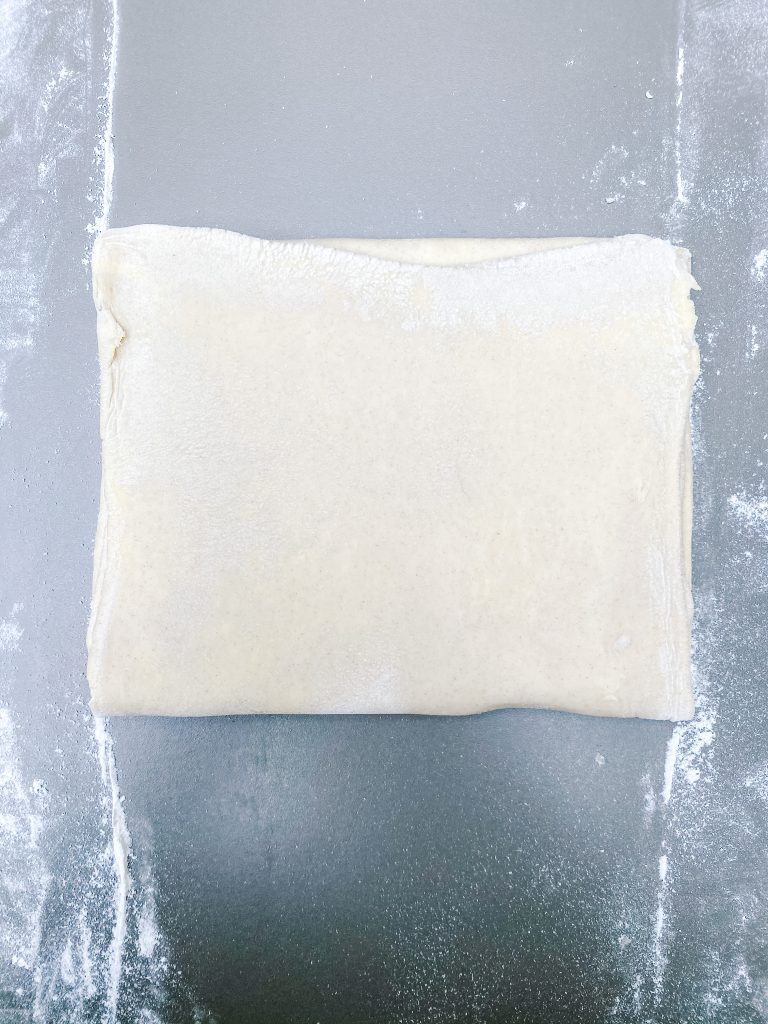
Brush excess flour off top and underneath. Refrigerate 30 mins.
Fourth and Fifth Folds:
- Fourth and Fifth Folds: repeat the third turn in exactly the same way 2 more times. After the fifth turn, put the pastry back in the fridge for at least 1 hour, or even longer.
Your puff pastry is now ready to use.
Made this recipe?
If you make this recipe, do please tag me on instagram @daffodil_kitchen. You could also leave a comment in the box directly below the recipe.
Puff Pastry
Crispy, light and flaky, puff pastry is a laminated dough made from flour with a high ratio of butter inserted inside the dough and then rolled and folded numerous times. Makes 570g
Ingredients
You need to start making this pastry a minimum of 5 – 5½ hours before you want to use it. This includes around 4 hours refrigeration time. However, it will also be just fine to make it a day or two before you want to use it and keep it covered and in the fridge until ready.
- 250g plain/all-purpose flour
- ½ teaspoon fine salt
- 130g/ml very cold water
- 190g cold unsalted butter, in a block
Instructions
-
5 – 5½ hours before you want to use the pastry, start making the dough with flour, water and salt: weigh the flour into the bowl from a free-standing mixer and stir in the salt.
-
Pour in the water and roughly mix together with a spoon or knife.
-
Using the dough attachment from your mixer, knead on a medium speed for 5 minutes or until the dough is very smooth and has completely come together. Alternatively you could knead this by hand.
-
Form into a smooth ball with your hands, cover in cling film and put in the fridge for 30 minutes.
-
Next prepare the butter: whilst the dough is in the fridge, prepare the butter. Lay a large piece of baking parchment on your work surface and place the butter in the centre. Cover with a second large piece of baking parchment.
-
Bash the butter with a rolling pin to make a flat rectangle measuring 24cms x 17cms. Lift the paper off the top from time to time and use a palette knife to ensure your butter keeps a rectangle shape. If some areas are thicker than others and you have bits of butter sticking out, you can cut these off and stick onto the thin parts! Cover with the paper and roll and smooth with a rolling pin, until you get the correct size and shape.
-
Leave on the baking parchment and pop onto a hard surface, such as a chopping board, and put back in the fridge, covered with baking parchment, to harden for at least 20 minutes.
-
Bring the dough and butter together and first fold: when the dough has been in the fridge for 30 minutes, remove and lay in the centre of lightly flowered surface and roll into a long rectangle 40cms x 20cms stopping to ensure the edges are as straight as possible. Use a palette knife to help maintain the shape. Brush any excess flour off the surface of the dough.
-
Remove the butter from the fridge and take the parchment off the top layer. Whilst the butter is still attached to the under layer of parchment, use this to help you move the butter. Place it on the bottom of the rolled-out pastry, quite close to the edges and carefully peel off the parchment.
-
Fold the top ⅓ of the dough over the butter and brush any excess flour off the surface of the dough. Then fold the bottom third of the dough and butter up over the top third. Now brush any excess flour off the surface of this dough and also on the underside. Your dough will now be in layers – dough, butter, dough, butter, dough.
-
Seal the edges with the rolling pin, cover in cling film and put back in the fridge for 30 minutes.
-
Second fold – after 30 minutes, remove the dough from the fridge, and with the short side facing you, roll the pastry into a long rectangle 50cms x 20cms. Start rolling by pressing the rolling pin into the dough and butter at close intervals and then roll. Brush any excess flour off the surface of the dough.
-
Now, fold the bottom quarter of the pastry to the centre of the rectangle and then fold the top quarter of the pastry up to meet it. Brush any excess flour off the surface of the dough.
-
Fold the pastry in half along the centre line – this is called a book turn. Once again, brush any excess flour off the surface of the top and underside of the dough. Cover with cling film and put back in the fridge for 30 minutes.
-
Third fold: after 30 minutes, remove from the fridge and, with the short side facing you again, roll into a rectangle 45cms x 20cms. Brush any excess flour off the surface of the dough.
-
This time fold the top ⅓ down, brush any excess flour off the surface of the dough and then fold the bottom ⅓ over this fold. Once again, brush any excess flour off the surface of the top and underside of the dough. This is called a single turn. Cover with cling film and put back in the fridge for 30 minutes.
-
Fourth and Fifth Folds: repeat the third turn in exactly the same way 2 more times. After the fifth turn, put the pastry back in the fridge for at least 1 hour, or even longer.
-
Your puff pastry is now ready to use.
Recipe Notes
Equipment:
- freestanding mixer with a dough hook or mixing bowl
- kitchen scales and measuring spoons
- rolling pin
- cling film
- baking parchment
- chopping board or other flat surface

Biscoff 'No-Bake' Cheesecake

Oven-Baked Kale Crisps
You May Also Like

White Chocolate Panna Cotta with Blueberry and Blackberry Coulis
29th July 2022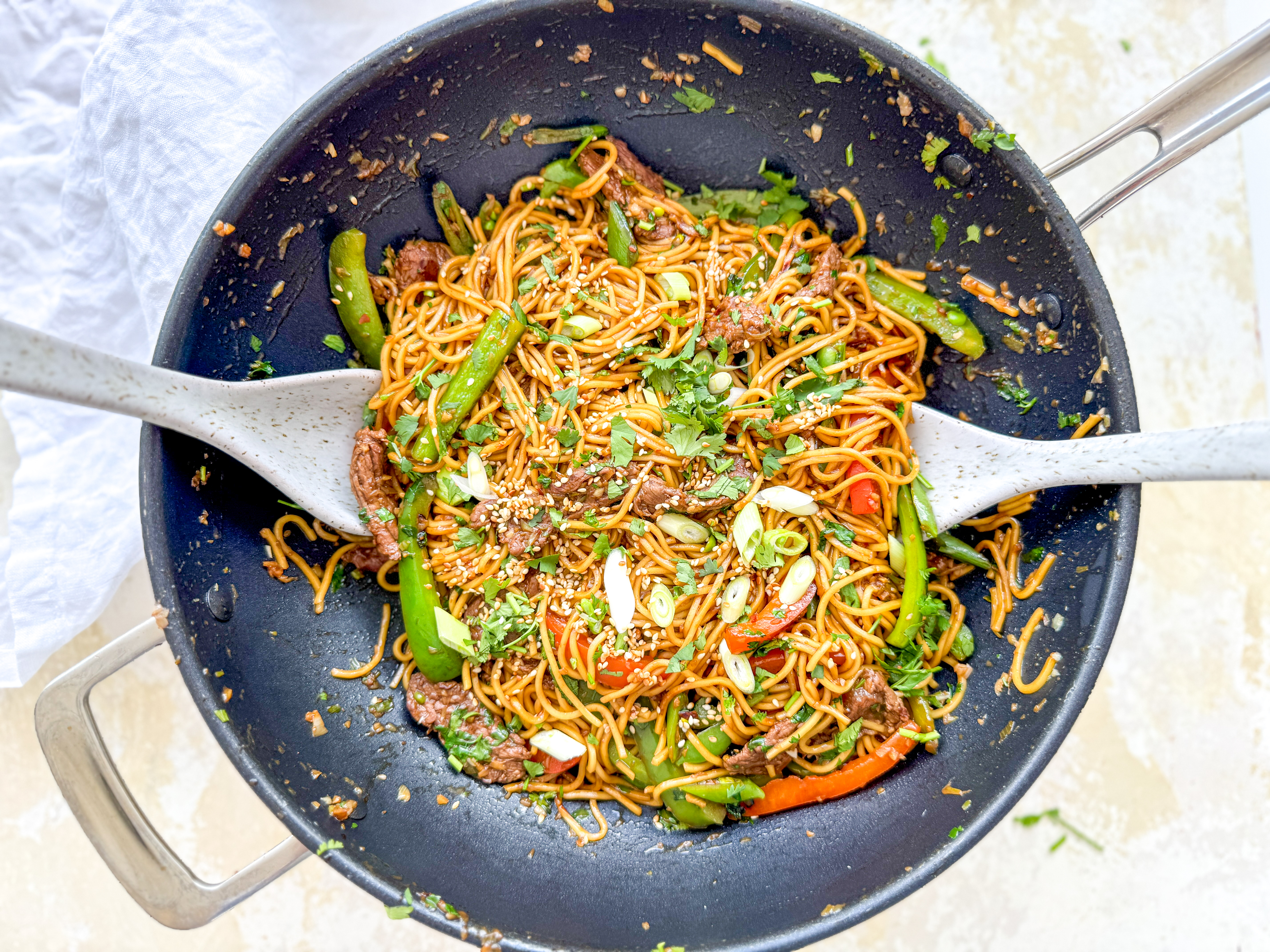
Soy and Ginger Noodles with Beef
17th April 2025